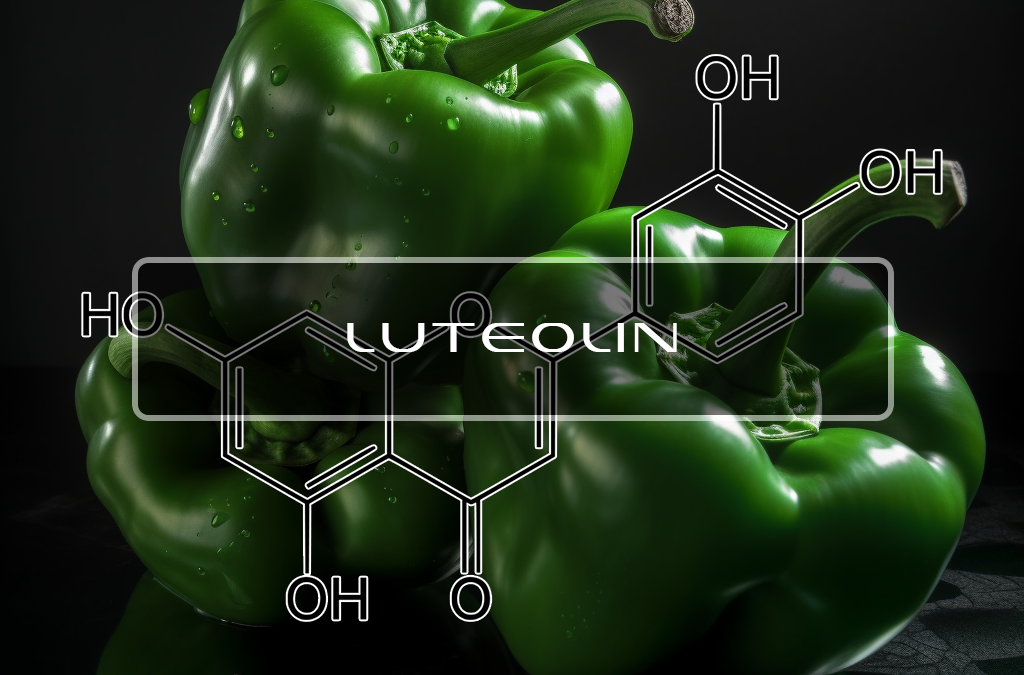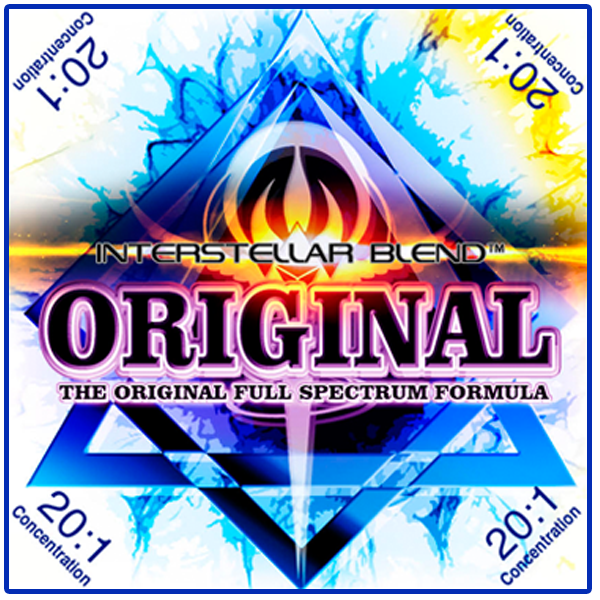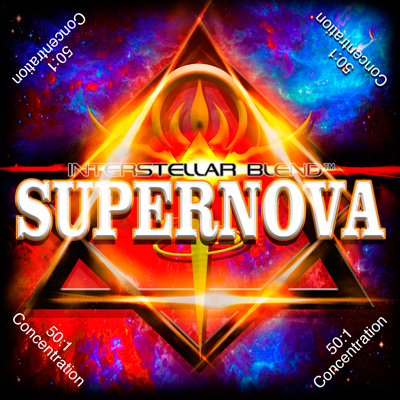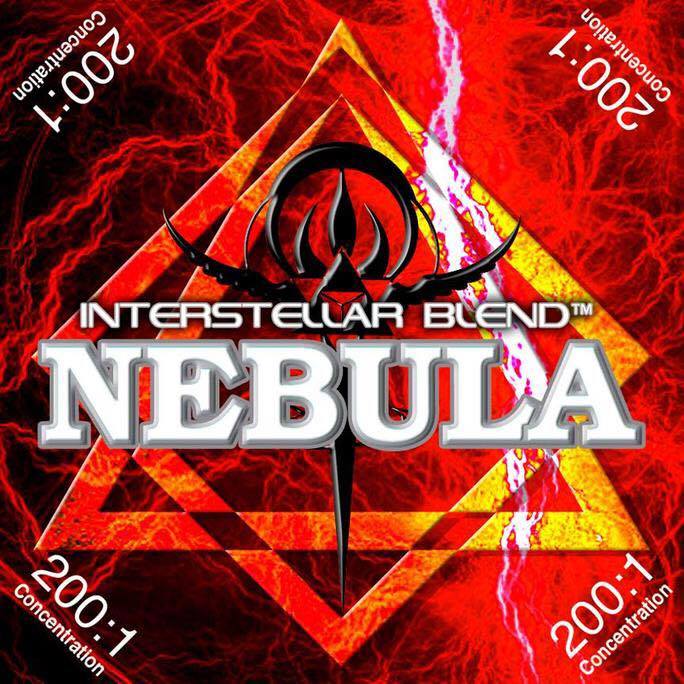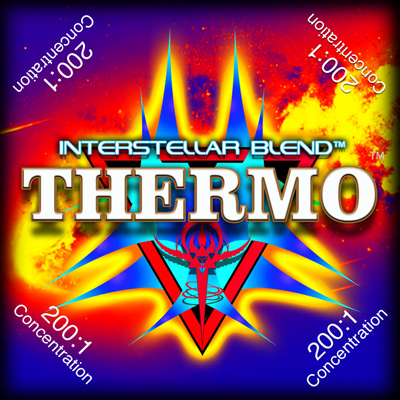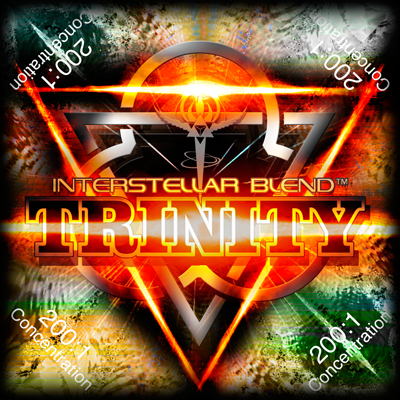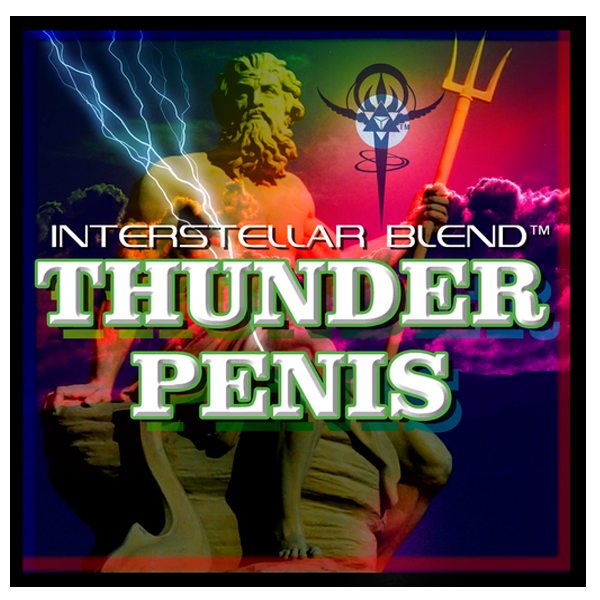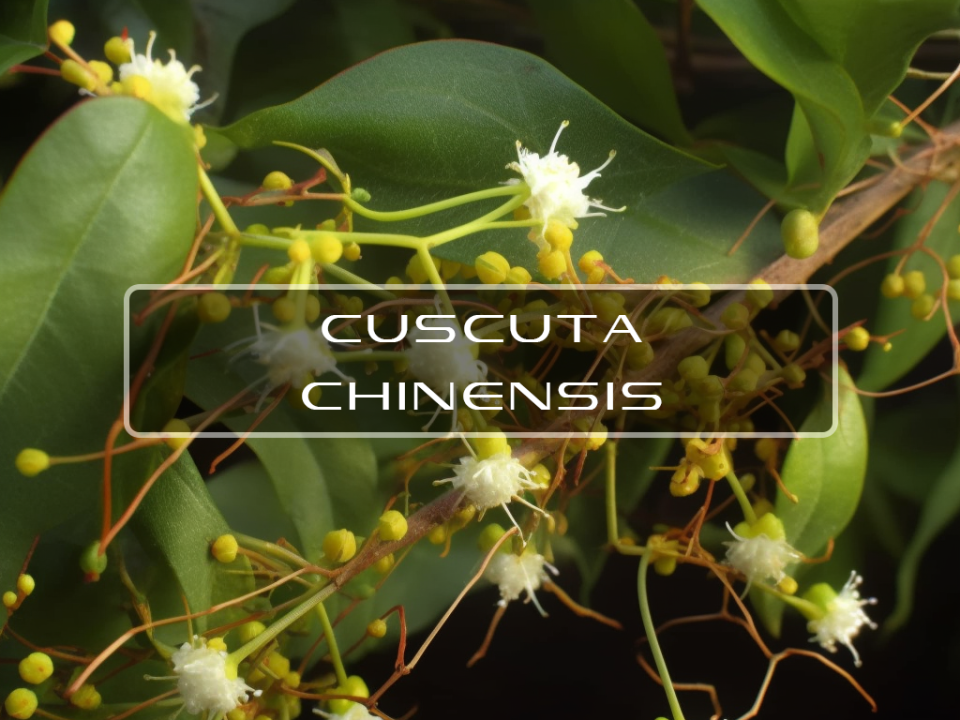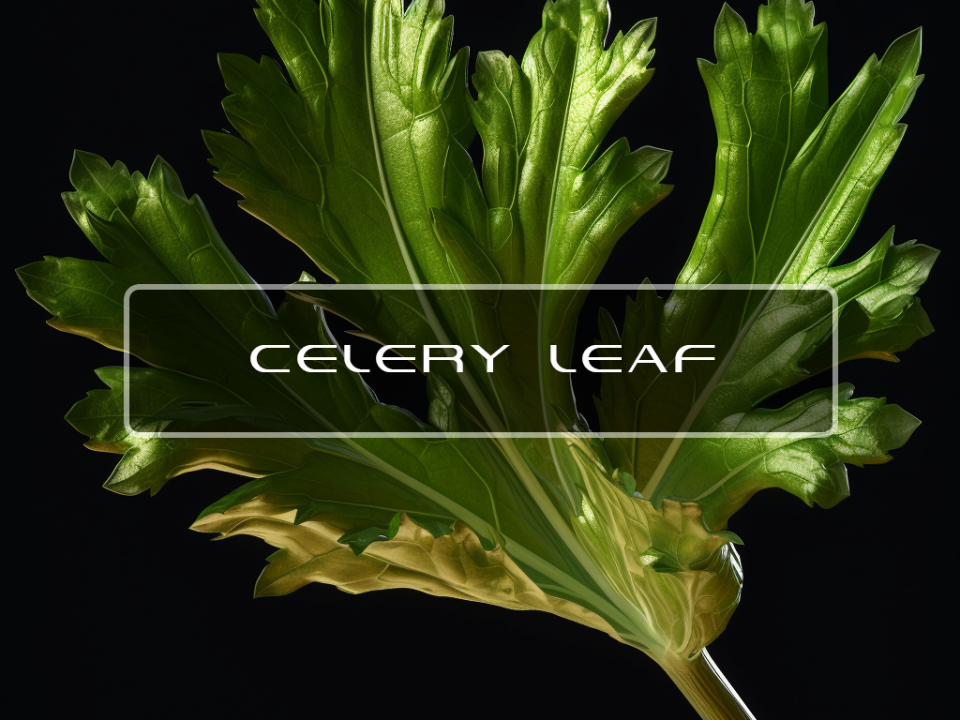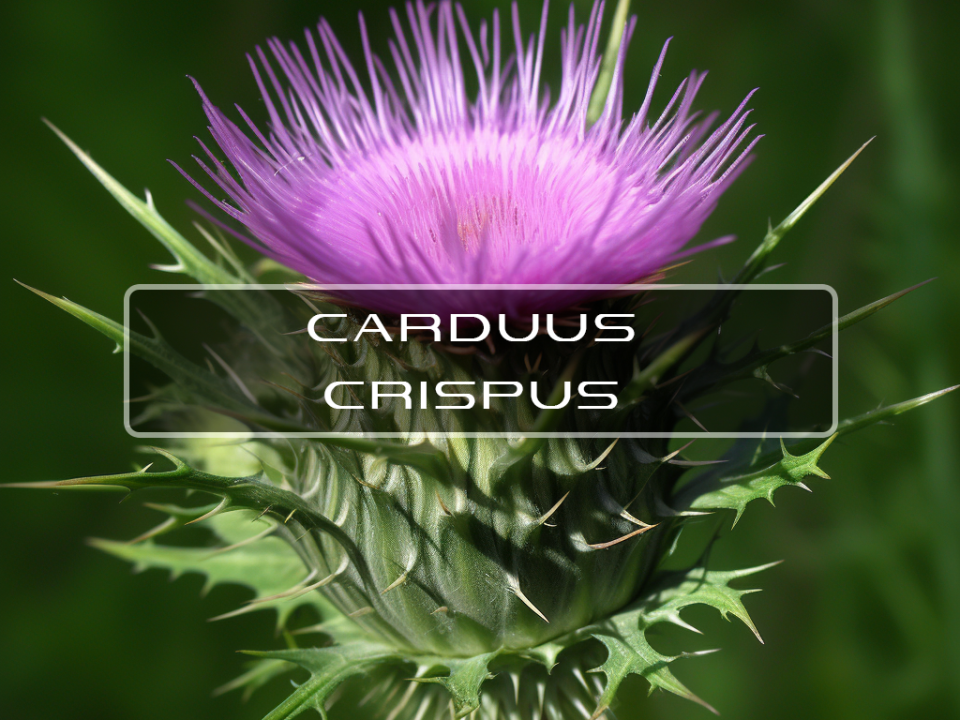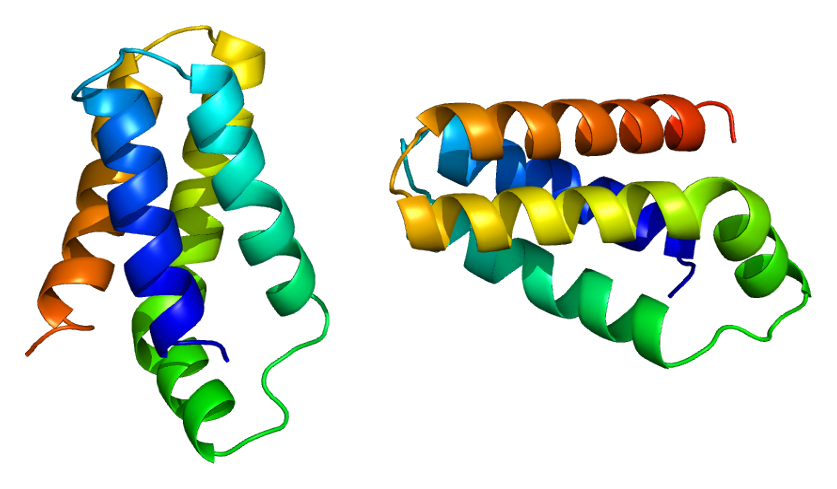
MTOR : The Rapid Aging Pathway
April 1, 2019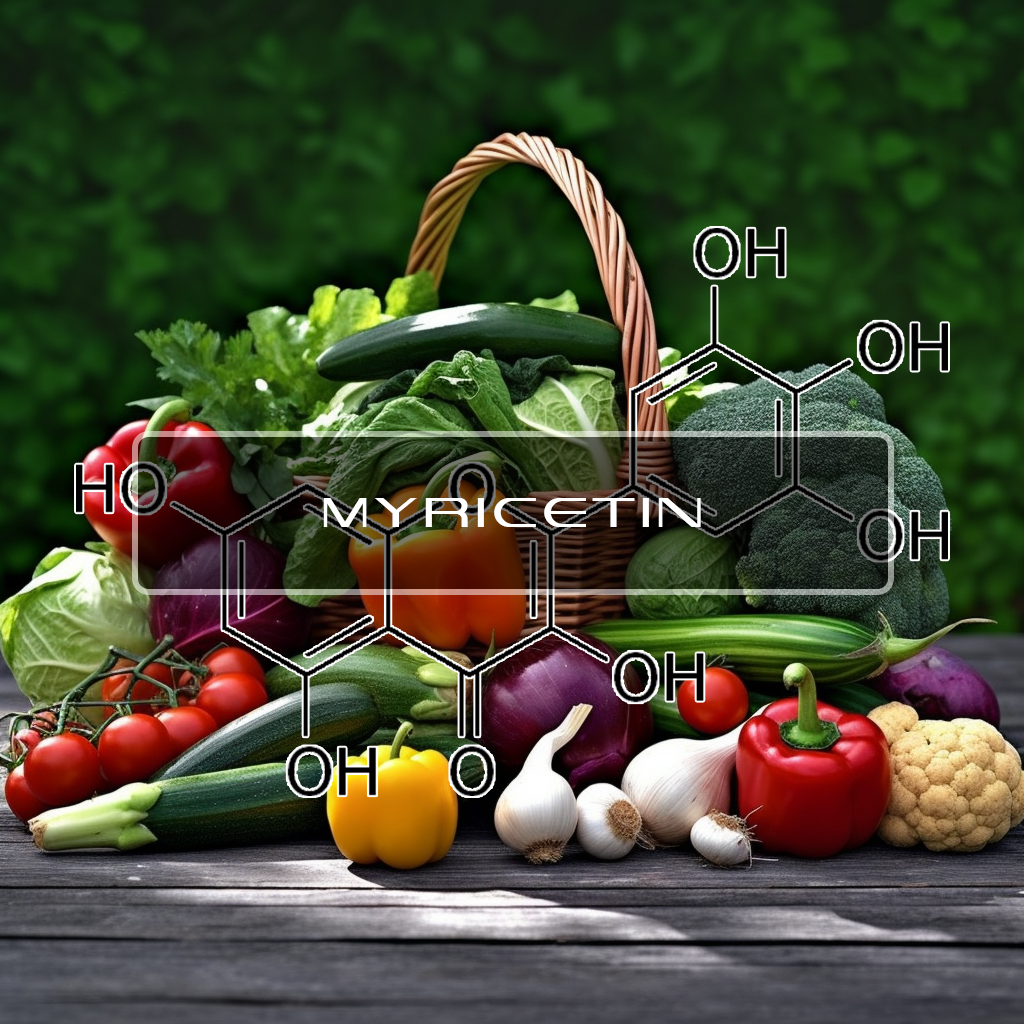
Myricetin
April 11, 2019Luteolin


Benefits of Luteolin
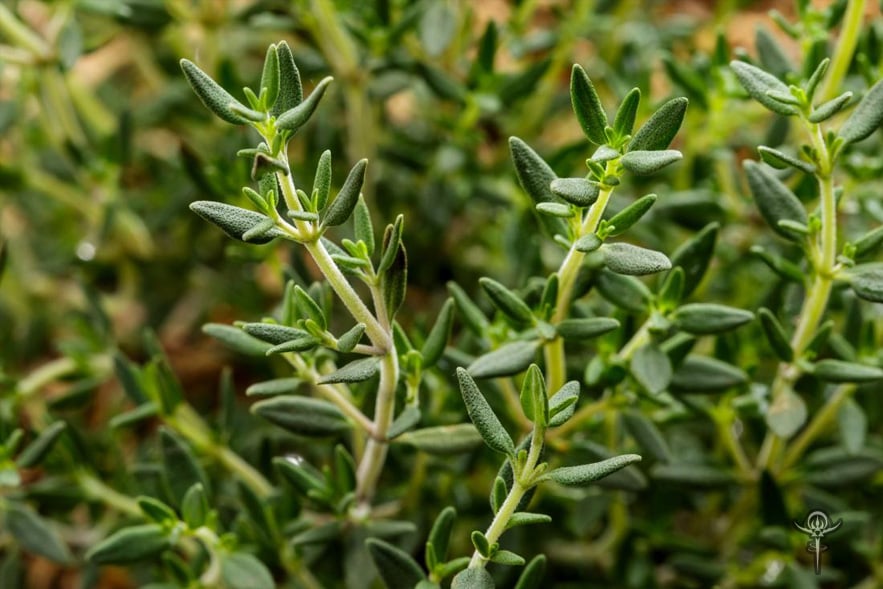
Experiments found that luteolin-induced CH27 cell apoptosis was accompanied by activation of antioxidant enzymes, such as superoxide dismutase and catalase, but not through the production of reactive oxygen species and disruption of mitochondrial membrane potential. Therefore, the effects of luteolin on CH27 cell apoptosis were suspected to result from the antioxidant rather than the prooxidant action of luteolin.
Anti-Inflammatory - Luteolin displays specific anti-inflammatory effects at micromolar concentrations which are only partly explained by its anti-oxidant capacities. The anti-inflammatory activity includes activation of anti-oxidative enzymes, suppression of the NFκB pathway and inhibition of pro-inflammatory substances.
In vivo, luteolin reduced increased vascular permeability and was effective in animal models of inflammation after parenteral and oral application.
Some data for oral and topical bioavailability exist, but more quantitative research in this field is needed to evaluate the physiological and therapeutical potential of luteolin.
To better understand the immuno-modulatory effects of this important flavonoid, they performed a genome-wide expression analysis in pro-inflammatory challenged microglia treated with luteolin and conducted a phenotypic and functional characterization.
Findings confirm the inhibitory effects of luteolin on pro-inflammatory cytokine expression in microglia. Moreover, our transcriptomic data suggest that this flavonoid is a potent modulator of microglial activation and affects several signaling pathways leading to a unique phenotype with anti-inflammatory, anti-oxidative, and neuroprotective characteristics.
With the identification of several novel luteolin-regulated genes, our findings provide a molecular basis to understand the versatile effects of luteolin on microglial homeostasis. The data also suggest that luteolin could be a promising candidate to develop immuno-modulatory and neuroprotective therapies for the treatment of neurodegenerative disorders.
Anti-Depressant - In the present study, they sought to identify which constituent of CJ might be responsible for its antidepressant effects and determine probable mechanism of action. The ethanol extract of CJ was administered to mice then behavioral changes were evaluated in the forced-swimming test (FST) and open-field test (OFT).
Altogether, the present results suggest that the antidepressant-like effect of CJ was most probably induced by its constituent luteolin, mediated through potentiation of the GABAA receptor-Cl(-) ion channel complex.
The effect of luteolin on CA1 pyramidal layer thickness was also examined. The results demonstrated that luteolin significantly ameliorated the spatial learning and memory impairment induced by STZ treatment. STZ significantly reduced the thickness of CA1 pyramidal layer and treatment of luteolin completely abolished the inhibitory effect of STZ.
Results suggest that luteolin has a potentially protective effect on learning defects and hippocampal structures in AD.
Brain and Nerve Protection - The natural flavonoid luteolin has antioxidant, anti-inflammatory, mast cell–blocking, and neuroprotective effects. It was shown to improve cognitive performance in a mouse model of ASD, but its effect in humans has not been adequately studied.
The goal of this study was to assess the effectiveness and tolerability in white children with ASD of a dietary supplement containing 2 flavonoids (>95% pure), luteolin (100 mg/capsule, from chamomile) and quercetin (70 mg/capsule), and the quercetin glycoside rutin (30 mg/capsule) from the Sophora japonica leaf, formulated in olive kernel oil to increase oral absorption.
A total of 40 children completed the protocol. There was a significant improvement in adaptive functioning as measured by using the VABS age-equivalent scores (8.43 months in the communication domain, 7.17 months in daily living skills, and 8 months in the social domain; P < 0.005), as well as in overall behavior as indicated by the reduction (26.6%–34.8%) in Aberrant Behavior Checklist subscale scores.
These results are encouraging in that the combination of the flavonoids luteolin and quercetin seemed to be effective in reducing ASD symptoms, with no major adverse effects.
Anti-Cancer - In the present study, they investigated the chemo-sensitizing effect of luteolin in both cisplatin-resistant ovarian cancer cell line and a mice xenotransplant model. In vitro, CCK-8 assay showed that luteolin inhibited cell proliferation in a dose-dependent manner, and luteolin enhanced anti-proliferation effect of cisplatin on cisplatin-resistant ovarian cancer CAOV3/DDP cells.
They suggest that luteolin in combination with cisplatin could potentially be used as a new regimen for the treatment of ovarian cancer.
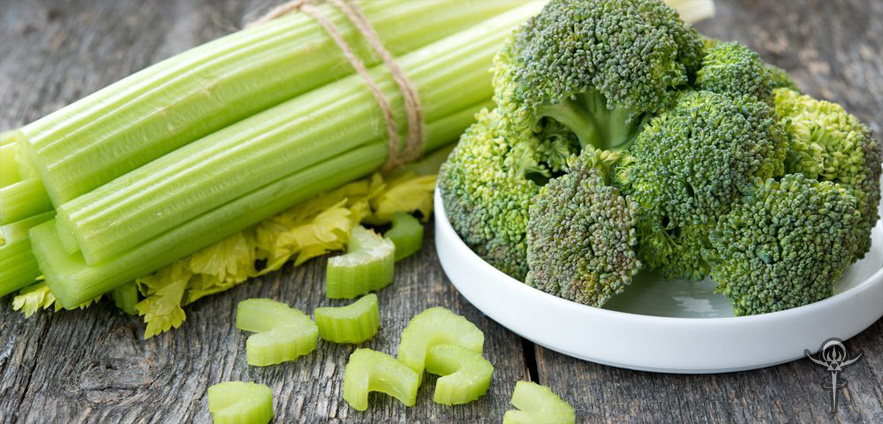
Related Products
- Luteolin Reduces Alzheimer’s Disease Pathologies Induced by Traumatic Brain Injury
- PEA and Luteolin synergistically reduce mast cell-mediated toxicityand elicit neuroprotection in cell-based models of brain ischemia
- Neuroprotection of LuteolinAgainst Aβ_(25-35) Induced Neural Damage
- Luteolin downregulates TLR4, TLR5, NF-κB and p-p38MAPK expression, upregulates the p-ERK expression, and protects rat brains against focal ischemia
- Luteolin reduced the traumatic brain injury-induced memory impairments in rats: Attenuating oxidative stress and dark neurons of Hippocampus
- Ameliorating effect of Luteolin on memory impairment in an Alzheimer’s disease model
- Erratum to: A new co-ultramicronized composite including palmitoylethanolamide and Luteolin to prevent neuroinflammation in spinal cord injury
- The effects of C-glycosylation of Luteolin on its antioxidant, anti-Alzheimer’s disease, anti-diabetic, and anti-inflammatory activities
- Neuroprotection by Association of Palmitoylethanolamide with Luteolin in Experimental Alzheimer’s Disease Models: The Control of Neuroinflammation
- Simultaneous electroanalytical determination of Luteolin and rutin using artificial neural networks
- Luteolin as a potential preventive and therapeutic candidate for Alzheimer’s disease
- Luteolin Exerts Neuroprotective Effect by Up-regulation of HO-1 via JNK Pathway in Primary Cultured Rat Cortical Cells
- Postischemic administration of liposome-encapsulated Luteolin prevents against ischemia-reperfusion injury in a rat middle cerebral arteryocclusion model
- Neurotrophic and Cytoprotective Action of Luteolin in PC12 Cells through ERK-Dependent Induction of Nrf2-Driven HO-1 Expression
- Neuroprotective effect of Luteolin on amyloid β protein (25–35)‐induced toxicity in cultured rat cortical neurons
- Brain Inflammation, Neuropsychiatric Disorders, and Immunoendocrine Effects of Luteolin
- Luteolin promotes long-term potentiation and improves cognitive functions in chronic cerebral hypoperfused rats
- Protective role of Luteolin against cognitive dysfunction induced by chronic cerebral hypoperfusion in rats
- Luteolin as an anti-inflammatory and neuroprotective agent: A brief review
- Protective effects of Luteolin against cognitive impairment induced by infusion of Aβ peptide in rats
- The anti-amnesic effects of Luteolin against amyloid β25–35 peptide-induced toxicity in mice involve the protection of neurovascular unit
- Luteolin protects against high fat diet-induced cognitive deficits in obesity mice
- Luteolin from Purple Perilla mitigates ROS insult particularly in primary neurons
- Pharmacodynamic Effect of Luteolin Micelles on Alleviating Cerebral Ischemia Reperfusion Injury
- Luteolin Reduces Zinc-Induced Tau Phosphorylation at Ser262/356 in an ROS-Dependent Manner in SH-SY5Y Cells
- Dietary Luteolin Reduces Proinflammatory Microglia in the Brain of Senescent Mice
- Effects of Luteolin onlearning acquisition in rats: Involvement of the central cholinergic system
- Luteolin Inhibits Microglial Inflammation and Improves Neuron Survival Against Inflammation
- Luteolin reduces primary hippocampal neurons death induced by neuroinflammation
- Luteolin improves the impaired nerve functions in diabetic neuropathy: behavioral and biochemical evidences
- Neuroprotective effects of Luteolin against apoptosis induced by 6-hydroxydopamine on rat pheochromocytoma PC12 cells
- Luteolin Inhibits Microglia and Alters Hippocampal-Dependent Spatial Working Memory in Aged Mice
- Luteolin protects the hippocampus against neuron impairments induced by kainic acid in rats
- Protective properties of quercetin and Luteolin from Petasites japonicus leaves against Aβ (25–35)-induced neurotoxicity in B103 cells
- Therapeutic potential of Luteolin in transgenic Drosophila model of Alzheimer’s disease
- Luteolin Could Improve Cognitive Dysfunction by Inhibiting Neuroinflammation
- Cellular uptake of quercetin and Luteolin and their effects on monoamine oxidase-A in human neuroblastoma SH-SY5Y cells
- Luteolin attenuates neuronal apoptosis in the hippocampi of diabetic encephalopathy rats
- The protective effect of Luteolin on amyloid β protein (25–35)-induced neurotoxicity in primary rat cortical neuron cells and possible mechanisms
- Additive Protective Effects of Luteolin and Pyruvate against 6-Hydroxydopamine and 3-Hydroxykynurenine Induced Neurotoxicity in SH-SY5Y Cells
- Bioavailability and Pharmaco-therapeutic Potential of Luteolin in Overcoming Alzheimer’s Disease
- A new therapeutic target for Alzheimer’s disease: effects of palmitoylethanolamide with Luteolin association on neuroinflammation pathway (845.10)
- The combination of Luteolin and l-theanine improved Alzheimer disease–like symptoms by potentiating hippocampal insulin signaling and decreasing neuroinflammation and norepinephrine degradation in amyloid-β–infused rats
- Luteolin provides neuroprotection in models of traumatic brain injury via the Nrf2–ARE pathway
- Effects of intrathecal and intracerebroventricular administration of Luteolin in a rat neuropathic pain model
- Effects of Luteolinon spatial memory, cell proliferation, and neuroblast differentiation in the hippocampal dentate gyrus in a scopolamine-induced amnesia model
- Neuroprotection ofLuteolin against methylmercury-induced toxicity in lobster cockroach Nauphoeta cinerea
- Luteolin induces hippocampal neurogenesis in the Ts65Dn mouse model of Down syndrome
- Co-Ultramicronized Palmitoylethanolamide/Luteolin Promotes Neuronal Regeneration after Spinal Cord Injury
- Luteolin Protected against Beta-Amyloid-induced Neuronal Cell Death and Memory Impairment via Activation of Nrf2-HO-1 Signaling Pathway
- A new co-ultramicronized composite including palmitoylethanolamide and Luteolin to prevent neuroinflammation in spinal cord injury
- Luteolin, a Flavonoid with Potential for Cancer Prevention and Therapy
- Sa1967 The Effect of Flavonoids Luteolin and Quercetin Upon Colon Cancer Cells In Vitro; “So What’s in Your Fiber?”
- Protective role of Luteolin on the status of lipid peroxidation and antioxidant defense against azoxymethane-induced experimental colon carcinogenesis
- Anti-tumor promoting potential of Luteolin against 7,12-dimethylbenz(a)anthracene-induced mammary tumors in rats
- Dose- and Time-Dependent Effects of Luteolin on Liver Metallothioneins and Metals in Carbon Tetrachloride-Induced Hepatotoxicity in Mice
- Luteolin reduces cancer‑induced skeletal and cardiac muscle atrophy in a Lewis lung cancer mouse model
- Luteolin, an emerging anti-cancer flavonoid, poisons eukaryotic DNA topoisomerase I
- Luteolin inhibits insulin-like growth factor 1 receptor signaling in prostate cancer cells
- Luteolin Induces Apoptosis in Oral Squamous Cancer Cells
- Luteolin inhibits cell proliferation during Azoxymethane-induced experimental colon carcinogenesis via Wnt/ β-catenin pathway
- The Effect of Luteolin on Lymphocyte Cells In Leukemia Patient
- Induction of cell cycle arrest and apoptosis in HT-29 human colon cancer cells by the dietary compound Luteolin
- Luteolin Inhibits Protein Kinase Cε and c-Src Activities and UVB-Induced Skin Cancer
- Anti-carcinogenic Effects of the Flavonoid Luteolin
- Luteolin, quercetin and ursolic acid are potent inhibitors of proliferation and inducers of apoptosis in both KRAS and BRAF mutated human colorectal cancer cells
- The combination of TRAIL and Luteolin enhances apoptosis in human cervical cancer HeLa cells
- Luteolin inhibits invasion of prostate cancer PC3 cells through E-cadherin
- Inhibition of cell survival, invasion, tumor growth and histone deacetylase activity by the dietary flavonoid Luteolin in human epithelioid cancer cells
- Luteolin induced G2 phase cell cycle arrest and apoptosis on non-small cell lung cancer cells
- A Critical Role of Luteolin-Induced Reactive Oxygen Species in Blockage of Tumor Necrosis Factor-Activated Nuclear Factor-κB Pathway and Sensitization of Apoptosis in Lung Cancer Cells
- Cytochrome P450 CYP1 metabolism of hydroxylated flavones and flavonols: Selective bioactivation of Luteolin in breast cancer cells.
- Anti-cancer Effects of Luteolin and Its Novel Mechanism in HepG2 Hepatocarcinoma Cell
- Luteolin, a novel natural inhibitor of TPL2 kinase, inhibits tumor necrosis factor-α-induced cyclooxygenase-2 expression in JB6 mouse epidermis cells
- Anti-tumor mechanisms of Luteolin, a major Flavonoid oF Chrysanthemum Morifolium
- Luteolin Suppresses Proliferation of Choriocarcinoma Cells through Regulating PI3K/AKT Signaling Pathway and Blocking Transcriptional Activity of SREBP1
- Anti-proliferative and chemosensitizing effects of Luteolin on human gastric cancer AGS cell line
- Sensitizing HER2-overexpressing cancer cellsto Luteolin-induced apoptosis through suppressing p21WAF1/CIP1 expression with rapamycin
- Luteolin exerts anti-tumor activity through the suppression of epidermal growth factor receptor-mediated pathway in MDA-MB-231 ER-negative breast cancer cells
- Luteolin, a bioflavonoid inhibits colorectal cancer through modulation of multiple signaling pathways: a review.
- Synergistic apoptotic effect of celecoxib and Luteolin on breast cancer cells
- Molecular targets of Luteolin in cancer
- Luteolin Induces Growth Arrest in Colon Cancer Cells Through Involvement of Wnt/β-Catenin/GSK-3β Signaling
- Characteristic rat tissue accumulation of nobiletin, a chemopreventive polymethoxyflavonoid, in comparison with Luteolin
- Luteolin Inhibits Proliferation Induced by IGF-1 Pathway Dependent ERα in Human Breast Cancer MCF-7 Cells
- Effects of dietary flavonoids, Luteolin, and quercetin on the reversal of epithelial–mesenchymal transition in A431 epidermal cancer cells
- Luteolin attenuates TGF-β1-induced epithelial–mesenchymal transition of lung cancer cells by interfering in the PI3K/Akt–NF-κB–Snail pathway
- Luteolin enhances paclitaxel-induced apoptosis in human breast cancer MDA-MB-231 cells by blocking STAT3
- The dietary flavonoid Luteolin inhibits Aurora B kinase activity and blocks proliferation of cancer cells
- Serum Concentration of Genistein, Luteolin and Colorectal Cancer Prognosis
- Luteolin sensitizes two oxaliplatin-resistant colorectal cancer cell lines to chemotherapeutic drugs via inhibition of the Nrf2 pathway.
- Cancer Chemopreventive Potential of Luteolin-7-O-Glucoside Isolated From Ophiorrh
- Proteomic identification of anti-cancer proteins in Luteolin-treated human hepatoma Huh-7 cells
- Luteolin, a bioflavonoid inhibits Azoxymethane-induced colorectal cancer through activation of Nrf2 signaling
- Luteolin suppresses growth and migration of human lung cancer cells
- Response of Myeloid Leukemia Cells to Luteolin is Modulated by Differentially Expressed Pituitary Tumor-Transforming Gene 1 (PTTG1) Oncoprotein
- Luteolininduces apoptosis in multidrug resistant cancer cellswithout affecting the drug transporter function: Involvement of cell line‐specific apoptotic mechanisms
- Luteolin, ellagic acid and punicic acid are natural products that inhibit prostate cancer metastasis
- Luteolin Inhibits Breast Cancer Development and Progression In Vitro and In Vivo by Suppressing Notch Signaling and Regulating MiRNAs
- Luteolin inhibits Musashi1 binding to RNA and disrupts cancer phenotypes in glioblastoma cells
- Luteolin decreases IGF-II production and downregulates insulin-like growth factor-I receptor signaling in HT-29 human colon cancer cells
- Combination of oncolytic adenovirus and Luteolin exerts synergistic antitumor effects in colorectal cancer cells and a mouse model
- Targeted Luteolin Delivery via Bevacizumab-Modified Polymer Microbubbles to Colon Cancer Cells
- Luteolin exerts a marked antitumor effect in cMet-overexpressing patient-derived tumor xenograft models of gastric cancer
- Luteolin enhances TNF-related apoptosis-inducing ligand’s anticancer activity in a lung cancer xenograft mouse model
- Luteolin Regulation of Estrogen Signaling and Cell Cycle Pathway Genes in MCF-7 Human Breast Cancer Cells
- Luteolin as a glycolysis inhibitor offers superior efficacy and lesser toxicity of doxorubicin in breast cancer cells
- Luteolin induces apoptotic cell death through AIF nuclear translocation mediated by activation of ERK and p38 in human breast cancer cell lines
- Radiosensitization effect of Luteolin on human gastric cancer SGC-7901 cells.
- Extra precision Docking studies of novel Luteolin analogues for the inhibition of Tankyrase II- “a theoretical based approach towards novel cancer target
- The Influence of Luteolin on Schultz-Dale Response in Animals
- Luteolin Attenuates Doxorubicin-Induced Cytotoxicity to MCF-7 Human Breast Cancer Cells
- Gefitinib and Luteolin Cause Growth Arrest of Human Prostate Cancer PC-3 Cells via Inhibition of Cyclin G-Associated Kinase and Induction of miR-630
- Luteolin Induces Apoptosis by Up-regulating miR-34a in Human Gastric Cancer Cells
- Luteolin sensitises drug-resistant human breast cancer cells to tamoxifen via the inhibition of cyclin E2 expression
- Luteolin 8-C-β-fucopyranoside inhibits invasion and suppresses TPA-induced MMP-9 and IL-8 via ERK/AP-1 and ERK/NF-κB signaling in MCF-7 breast cancer cells
- Luteolin inhibits progestin-dependent angiogenesis, stem cell-like characteristics, and growth of human breast cancer xenografts
- Inhibition of hypoxia-induced epithelial mesenchymal transition by Luteolin in non-small cell lung cancer cells
- Luteolin Suppresses Cancer Cell Proliferation by Targeting Vaccinia-Related Kinase 1
- EBV reactivation as a target of Luteolin to repress NPC tumorigenesis
- Luteolin Induces Cell Cycle Arrest and Apoptosis Through Extrinsic and Intrinsic Signaling Pathways in MCF-7 Breast Cancer Cells
- Luteolin is effective in thenon-small cell lung cancer model with L858R/T790MEGF receptor mutation anderlotinib resistance
- Molecular mechanisms of Luteolin-7-O-glucoside-induced growth inhibition on human liver cancer cells: G2/M cell cycle arrest and caspase-independent apoptotic signaling pathways
- Breast Cancer Resistance Protein-Mediated Efflux of Luteolin Glucuronides in HeLa Cells Overexpressing UDP-Glucuronosyltransferase 1A9
- Dietary Flavonoids Luteolin and Quercetin Suppressed Cancer Stem Cell Properties and Metastatic Potential of Isolated Prostate Cancer Cells
- Proteomic analysis reveals ATP-dependent steps and chaperones involvement in Luteolin–induced lung cancer CH27 cell apoptosis
- Epithelial‐to‐Mesenchymal Transition in Paclitaxel‐Resistant Ovarian Cancer Cells Is Downregulated by Luteolin
- Luteolin and gefitinib regulation of EGF signaling pathway and cell cycle pathway genes in PC-3 human prostate cancer cells
- Luteolin induces apoptotic cell death via antioxidant activity in human colon cancer cells
- [Effect of Luteolin and its combination with chemotherapeutic drugs on cytotoxicity of cancer cells].
- Luteolin Impacts on the DNA Damage Pathway in Oral Squamous Cell Carcinoma
- Luteolin: Anti-breast Cancer Effects and Mechanisms
- Luteolin inhibited proliferation and induced apoptosis of prostate cancer cellsthrough miR-301
- Luteolin inhibits lung metastasis, cell migration, and viability of triple-negative breast cancer cells
- A Superoxide-Mediated Mitogen-Activated Protein Kinase Phosphatase-1 Degradation and c-Jun NH2-Terminal Kinase Activation Pathway for Luteolin–Induced Lung Cancer Cytotoxicity
- Sphingosine Kinase 2 and Ceramide Transport as Key Targets of the Natural Flavonoid Luteolin to Induce Apoptosis in Colon Cancer Cells
- Luteolin exerts an anticancer effect on NCI-H460 human non-small cell lung cancer cells through the induction of Sirt1-mediated apoptosis
- Luteolin selectively kills STAT3 highly activated gastric cancer cells through enhancing the binding of STAT3 to SHP-1
- Synergistic effect between celecoxib and Luteolin is dependent on estrogen receptor in human breast cancer cells
- Luteolin suppresses angiogenesis and vasculogenic mimicry formation through inhibiting Notch1-VEGF signaling in gastric cancer
- Luteolin acts as a radiosensitizer in non‑small cell lung cancer cells by enhancing apoptotic cell death through activation of a p38/ROS/caspase cascade
- Regulation of cell cycle and RNA transcription genes identified by microarray analysis of PC-3 human prostate cancer cells treated with Luteolin
- Luteolin suppresses the metastasis of triple-negative breast cancer by reversing epithelial-to-mesenchymal transition via downregulation of β-catenin expression
- Attenuating Smac mimetic compound 3‐induced NF‐κB activation by Luteolin leads to synergistic cytotoxicity in cancer cells
- Luteolin Induces Apoptosis in BE Colorectal Cancer Cells by Downregulating Calpain, UHRF1, and DNMT1 Expressions
- Inhibitory effect of Luteolin on the proliferation of human breast cancer cell lines induced by epidermal growth factor.
- Luteolin induces N-acetylation and DNA adduct of 2-aminofluorene accompanying N-acetyltransferase activity and gene expression in human bladder cancer T24 cell line.
- Inhibition of ANO1 by Luteolin and its cytotoxicity in human prostate cancer PC-3 cells
- Luteolin induces apoptosis in vitro through suppressing the MAPK and PI3K signaling pathways in gastric cancer
- Anti-tumor effect of Luteolin is accompanied by AMP-activated protein kinase and nuclear factor-κB modulation in HepG2 hepatocarcinoma cells
- Cytochrome P450 CYP1 metabolism of hydroxylated flavones and flavonols: Selective bioactivation of Luteolin in breast cancer cells
- Luteolin potentiates the sensitivity of colorectal cancer cell lines to oxaliplatin through the PPARγ/OCTN2 pathway.
- Luteolin Overcomes Resistance to Benzyl Isothiocyanate- Induced Apoptosis in Human Colorectal Cancer HCT-116 Cells
- Main components of pomegranate, ellagic acid and Luteolin, inhibit metastasis of ovarian cancerby down-regulating MMP2 and MMP9
- Luteolin suppresses gastric cancer progression by reversing epithelial-mesenchymal transition via suppression of the Notch signaling pathway
- Inhibition of the metastatic progression of breast and colorectal cancer in vitro and in vivo in murine model by the oxidovanadium(IV) complex with Luteolin
- Modulatory effect of Luteolin on redox homeostasis and inflammatory cytokines in a mouse model of liver cancer
- Dietary flavonoids, Luteolin and quercetin, inhibit invasion of cervical cancer by reduction of UBE2S through epithelial–mesenchymal transition signaling
- Mechanism of metastasis suppression by Luteolin in breast cancer
- Luteolin induces apoptosis in mouse liver cancer cells through ROS mediatedpathway: A mechanistic investigation.
- Kaempherol and Luteolin Decrease Claudin-2 Expression Mediated by Inhibition of STAT3 in Lung Adenocarcinoma A549 Cells
- Anticancer effect of Luteolin is mediated by downregulation of TAM receptor tyrosine kinases, but not interleukin-8, in non-small cell lung cancer cells
- RPS12 increases the invasiveness in cervical cancer activatedby c-Myc and inhibited by the dietary flavonoids Luteolin and quercetin
- Luteolin inhibits colorectal cancer cell epithelial-to-mesenchymal transition by suppressing CREB1 expression revealed by comparative proteomics study
- Luteolin sensitizes human liver cancer cells to TRAIL‑induced apoptosis via autophagy and JNK‑mediated death receptor 5 upregulation
- Flavonoids Luteolin and Quercetin Inhibit RPS19 and contributes to metastasis of cancer cells through c-Myc reduction
- [Inhibitory effect of Luteolin on the angiogenesis of chick chorioallantoic membrane and invasion of breast cancer cells via downregulation of AEG-1 and MMP-2].
- Luteolin Inhibits Tumorigenesis and Induces Apoptosis of Non-Small Cell Lung Cancer Cells via Regulation of MicroRNA-34a-5p
- [Research progress on anti-tumor effects of Luteolin].
- Luteolin prevents UV-induced skin damage and MMP-1 activation by interfering with the P38-MAPK pathway and IL-20 release
- Luteolin and Gemcitabine Protect Against Pancreatic Cancer in an Orthotopic Mouse Model.
- Luteolin-Loaded Spion as a Drug Carrier for Cancer Cell In Vitro
- Luteolin attenuates Wnt signaling via upregulation of FZD6 to suppress prostate cancerstemness revealed by comparative proteomics
- MiR-34a, as a suppressor, enhance the susceptibility of gastric cancer cell to Luteolin by directly targeting HK1
- Apigenin and Luteolin Attenuate the Breaching of MDA-MB231 Breast Cancer Spheroids Through the Lymph Endothelial Barrier in Vitro
- Apigenin, Chrysin, and Luteolin Selectively Inhibit Chymotrypsin-Like and Trypsin-Like Proteasome Catalytic Activities in Tumor Cells
- Consumption of the Dietary Flavonoids Quercetin, Luteolin and Kaempferol and Overall Risk of Cancer– A Review and Meta-Analysis of the Epidemiological Data
- Cuminum cyminum fruits as source of Luteolin-7-O-glucoside, potent cytotoxic flavonoid against breast cancer cell lines
- Luteolin exerts pro-apoptotic effect and anti-migration effects on A549 lung adenocarcinoma cellsthrough the activation of MEK/ERK signaling pathway
- Effects of Luteolin, quercetin and baicalein on immunoglobulin E-mediated mediator release from human cultured mast cells.
- Effects of Luteolin and quercetin, inhibitors of tyrosine kinase, on cell growth and metastasis‐associated properties in A431 cells overexpressing epidermal growth factor receptor
- Inhibitory effect of Luteolin on hepatocyte growth factor/scatter factor–induced HepG2 cell invasion involving both MAPK/ERKs and PI3K–Akt pathways
- Protective effect of quercetin and Luteolin in human melanoma HMB-2 cells
- Luteolin inhibits the Nrf2 signaling pathway and tumor growth in vivo
- Enhanced Anti-tumor Activity by the Combination of the Natural Compounds (−)-Epigallocatechin-3-gallate and Luteolin
- Protective role of Luteolin in 1,2‐dimethylhydrazine induced experimental colon carcinogenesis
- Luteolin prevents PDGF-BB-induced proliferation of vascular smooth muscle cellsby inhibition of PDGF β-receptor phosphorylation
- Luteolin Inhibits Human Prostate Tumor Growthby Suppressing Vascular Endothelial Growth Factor Receptor 2-Mediated Angiogenesis
- Chemoprotective effect of plant phenolics against anthracycline‐induced toxicity on rat cardiomyocytes. Part III. Apigenin, baicalelin, kaempherol, Luteolin and quercetin
- Luteolin sensitizes the anticancer effect of cisplatin via c-Jun NH2-terminal kinase–mediated p53 phosphorylation and stabilization
- Luteolin induces G1 arrest in human nasopharyngeal carcinoma cells via the Akt–GSK-3β–Cyclin D1 pathway
- Whitening activity of Luteolin related to the inhibition of cAMP pathway in α-MSH-stimulated B16 melanoma cells
- Chemopreventive potential of Luteolin during colon carcinogenesis induced by 1,2-dimethylhydrazine.
- Luteolin Nanoparticle in Chemoprevention: In Vitro and In Vivo Anticancer Activity
- Inhibitory effects of Luteolin isolated fromixeris sonchifolia hance on the proliferation of hepg2 human hepatocellular carcinoma cells
- Protective effects of Luteolin-7-glucoside against liver injury caused by carbon tetrachloride in rats
- Effect of Luteolin on the Levels of Glycoproteins During Azoxymethane-induced Colon Carcinogenesis in Mice
- Autophagy Inhibitor ChloroquineEnhanced the Cell Death Inducing Effect of the Flavonoid Luteolin in Metastatic Squamous Cell Carcinoma Cells
- Upregulation of prostate‐derived Ets factor by Luteolin causes inhibition of cell proliferation and cell invasion in prostate carcinoma cells
- Luteolin inhibits matrix metalloproteinase 9 and 2 in azoxymethane-induced colon carcinogenesis
- Luteolin-loaded Phytosomes Sensitize Human Breast CarcinomaMDA-MB 231 Cells to Doxorubicin by Suppressing Nrf2 Mediated Signalling
- Luteolin reduces the invasive potential ofmalignant melanoma cells by targeting β3 integrin and the epithelial-mesenchymal transition
- The flavonoids diosmetin and Luteolinexert synergistic cytostatic effects in human hepatoma HepG2 cells via CYP1A-catalyzed metabolism, activation of JNK and ERK and P53/P21 up-regulation
- Luteolin–inhibited arylamine N-acetyltransferase activity and DNA–2-aminofluorene adduct in human and mouse leukemia cells
- Luteolin modulates expression of drug-metabolizing enzymes through the AhR and Nrf2 pathways in hepatic cells
- Luteolin enhances cholinergic activities in PC12 cells through ERK1/2 and PI3K/Akt pathways
- Luteolin, a flavonoid, as an anticancer agent: A review
- Luteolin suppresses colorectal cancer cell metastasis via regulation of the miR‑384/pleiotrophin axis
- Apoptosis induced by Luteolin in breast cancer: Mechanistic and therapeutic perspectives
- Abstract 4914: Luteolin inhibits metastasis of triple-negative breast cancer cells to the lungs
- Abstract 4159: Therapeutic effects of Luteolinagainst progestin-dependent breast cancer involves induction of apoptosis, and suppression of both stem-cell-like cells and angiogenesis
- EXPERIMENTAL STUDY OF ANTITUMOR AND CYTOKINES-MODULATING ACTIVITIES OF BISULFATE Luteolin AND Luteolin
- [Inhibitory effects of Luteolin on human gastric carcinoma xenografts in nude mice and its mechanism].
- Natural Polyphenols for Prevention and Treatment of Cancer
- 1067 POSTER Study of the Effects of Dietary Flavonoids, Luteolin and Quercetin on the Reversal of Epithelial-mesenchymal Transition in A431 Epidermal Cancer Cells
- Cyanidin-3-O-glucoside chloride acts synergistically with Luteolin to inhibit the growth of colon and breast carcinoma cells
- Synthesis of Luteolin loaded zein nanoparticles for targeted cancer therapy improving bioavailability and efficacy
- Growth inhibition of Luteolin on HepG2 cells is induced via p53 and Fas/Fas-ligand besides the TGF-β pathway
- Time-Dependent Metabolismof Luteolin by Human UDP-Glucuronosyltransferases and Its Intestinal First-Pass Glucuronidation in Mice
- Gas chromatographic/mass spectrometric profiling of Luteolin and its metabolites in rat urine and bile
- Diverse mechanisms of growth inhibition byLuteolin, resveratrol, and quercetin in MIA PaCa-2 cells: a comparative glucose tracer study with the fatty acid synthase inhibitor C75
- Hepatoprotective activity of luteolin isolated from A. millefolium on CCl4 intoxicated rat
- Inhibitory effects of Luteolin isolated fromixeris sonchifolia hance on the proliferation of hepg2 human hepatocellular carcinoma cells
- Cytotoxicity ofLuteolin in primary rat hepatocytes: the role of CYP3A‐mediated ortho‐benzoquinone metabolite formation and glutathione depletion
- Enhanced anticancer activity in vitroand in vivo of Luteolin incorporated into long‐circulating micelles based on DSPE‐PEG2000 and TPGS
- Selective Cytotoxicity of Luteolin and Kaempferol on Cancerous HepatocytesObtained from Rat Model of Hepatocellular Carcinoma: Involvement of ROS-Mediated Mitochondrial Targeting
- Raf and PI3K are the Molecular Targets for the Anti‐metastatic Effect ofLuteolin
- Study on inhibition of Luteolin on proliferation of human gastric cancer cell line BGC-823
- Modulation of G2/M cell cycle arrest and apoptosis by Luteolin in human colon cancer cells and xenografts
- Cytotoxic potential of Anisochilus carnosus (L.f.) wall and estimation of Luteolin content by HPLC
- Protective effects of three Luteolin derivatives on aflatoxin B1-induced genotoxicity on human blood cells
- In Silico Molecular Docking Studies of Rutin Compound against Apoptotic Proteins (Tumor Necrosis Factor, Caspase-3, NF-Kappa-B, P53, Collagenase, Nitric Oxide Synthase and Cytochrome C)
- Deciphering the molecular mechanism and apoptosis underlying the in‐vitro and in‐vivo chemotherapeutic efficacyof vanadium Luteolin complex in colon cancer
- Study on antitumor and antimetastatic effect of Luteolin
- Induction of cell cycle arrest and apoptosis inHT-29 human colon cancer cellsby the dietarycompound Luteolin
- Inhibitory effect of Luteolin and kaempferol on proliferation of human leukemic cell line HL-60 in vitro
- Luteolin suppresses tumor progression through lncRNA BANCR and its downstream TSHR/CCND1 signaling in thyroid carcinoma
- Luteolin enhances the cancer therapeutic effect of cisplatin in vitro and in vivo via stabilizing p53 protein
- Luteolin: A potential flavonoid for cancerous diseases
- Effect of Luteolin on glycoproteins metabolism in 1, 2-dimethylhydrazine induced experimental colon carcinogenesis.
- Luteolin ameliorates ferric nitrilotriacetic acid induced renal toxicity and tumor promotional response in rat
- In vitro study of molecular structure and cytotoxicity effect of Luteolin in the human colon carcinoma cells
- Abstract 1010: Synergistic antitumor effects of Luteolin and silibinin with overexpression of miR-7-1-3p inhibited autophagy and promoted apoptosis in glioblastoma
- 516 POSTER JNK-mediated p53 phosphorylation and stabilization contributes to the sensitization effect of Luteolin on the anti-cancer effect of cisplatin
- Luteolinenhances the antitumor activity of lapatinib in human breast cancer cells
- Evaluation of Luteolin in the Prevention of N-nitrosodiethylamine-induced Hepatocellular Carcinoma Using Animal Model System
- Phytochylomicron as a dual nanocarrier for liver cancer targetingof Luteolin: in vitro appraisal and pharmacodynamics
- Effects on Liver Lipid Metabolism of the Naturally Occurring Dietary Flavone Luteolin-7-glucoside
- Therapeutic and chemopreventive potential of Luteolin against growth and metastasis of breast cancer
- MicroRNA-6809-5p mediates Luteolin–induced anticancer effects against hepatoma by targeting flotillin 1
- [P8-192] High fat diet and Luteolin supplementation modulate breast tumor growth in C3H mice
- Anticancer activity of baicalein and Luteolin studied in colorectal adenocarcinoma LoVo cells and in drug-resistant LoVo/Dx cells
- Luteolin Promotes Degradation in Signal Transducer and Activator of Transcription 3 in Human Hepatoma Cells: An Implication for the Antitumor Potential of Flavonoids
- Flavonoids, taxifolin and Luteolin attenuate cellular melanogenesis despite increasing tyrosinase protein levels
- Luteolin and its inhibitory effect on tumor growthin systemic malignancies
- Luteolin, a bioflavonoid inhibits azoxymethane-induced colon carcinogenesis: Involvement of iNOS and COX-2
- The molecular mechanism of Luteolin-induced apoptosis is potentially related to inhibition of angiogenesis in human pancreatic carcinoma cells
- Anti-tumor activities of Luteolin and silibinin in glioblastoma cells: overexpression of miR-7-1-3p augmented Luteolin and silibinin to inhibit autophagy and induce apoptosis in glioblastoma in vivo
- Antioxidant and antitumor efficacy of Luteolin, a dietary flavone on benzo(a)pyrene-induced experimental lung carcinogenesis
- Bovine serum albumin binding, antioxidant and anticancer properties of an oxidovanadium(IV) complex with Luteolin
- Luteolin, a Novel Natural Inhibitor of Tumor Progression Locus 2 Serine/Threonine Kinase, Inhibits Tumor Necrosis Factor-α-Induced Cyclooxygenase-2 Expression in JB6 Mouse Epidermis Cells
- Luteolin enhances the bioavailability of benzo(a)pyrene in human colon carcinoma cells
- Luteolin exerts an anticancer effect on gastric cancer cells through multiple signaling pathways and regulating miRNAs
- Luteolin inhibits recruitment of monocytes and migration of Lewis lung carcinoma cells by suppressing chemokine (C–C motif) ligand 2 expression in tumor-associated macrophage
- Inhibition of p300 lysine acetyltransferase activity by Luteolin reduces tumor growth in head and neck squamous cell carcinoma (HNSCC) xenograft mouse model
- Potentiation of Luteolin cytotoxicity by flavonols fisetin and quercetin in human chronic lymphocytic leukemia cell lines
- Luteolin sensitizes the antiproliferative effectof interferon α/β by activation of Janus kinase/signal transducer and activator of transcription pathway signaling through protein kinase A-mediated inhibition of protein tyrosine phosphatase SHP-2 in cancer cells
- Induction of Endoplasmic Reticulum Stress via Reactive Oxygen Species Mediated by Luteolin in Melanoma Cells
- Luteolin, a novel p90 ribosomal S6 kinase inhibitor, suppresses proliferation and migration in leukemia cells
- Effects of Luteolinon arylamine N-acetyltransferase activity in human liver tumour cells.
- Evaluation of the antioxidant and anti-inflammatory nature of Luteolin in experimentally induced hepatocellular carcinoma
- Luteolin suppresses development of medroxyprogesterone acetate-accelerated 7,12-dimethylbenz(a)anthracene-induced mammary tumors in Sprague-Dawley rats
- HIF‐1α/VEGF signaling‐mediated epithelial–mesenchymal transition and angiogenesis is critically involved in anti‐metastasis effect of Luteolin in melanoma cells
- Luteolin induces intrinsic apoptosis via inhibition of E6/E7 oncogenes and activation of extrinsic and intrinsic signaling pathways in HPV-18-associated cells
- Protein Kinase C Inhibition and X-Linked Inhibitor of Apoptosis Protein Degradation Contribute to the Sensitization Effect of Luteolin on Tumor Necrosis Factor–Related Apoptosis-Inducing Ligand–Induced Apoptosis in Cancer Cells
- Synergistic anti-tumor actions of Luteolin and silibinin prevented cell migration and invasion and induced apoptosis in glioblastoma SNB19 cells and glioblastoma stem cells
- Natural Luteolin from Methanolic Extract of Malaysian Brucea javanica Leaves Induces Apoptosis in HeLaCell Lines
- Luteolin suppresses tumor proliferation through inducing apoptosisand autophagy via MAPK activation in glioma
- Luteolin inhibits proliferation and induces apoptosis of human melanoma cells in vivo and in vitro by suppressing MMP-2 and MMP-9 through the PI3K/AKT pathway
- Luteolinsensitizes Fas/FasL-induced apoptosis in HepG2 cellsthrough inhibiting Akt Activation and promoting XIAP Degradation
- Inhibitory Effect of Flavonoid Luteolin on 6-Hydroxydopamine Cytotoxicity via Suppression of Apoptosis-Related Protein Activation
- Luteolin induces cholangiocarcinoma cell apoptosisthrough the mitochondrial‐dependent pathway mediated by reactive oxygen species
- Luteolin inhibits proliferation of human glioblastoma cells via induction of cell cycle arrest and apoptosis
- Luteolin induces apoptosis via death receptor 5 upregulation in human malignant tumor cells
- Mechanism of Luteolin–induced apoptosis through suppressing p21(WAF1/CIP1) expression with rapamycin in HER2-overexpressing cancer cells
- LuteolinDecreases Epidermal Growth Factor Receptor‐Mediated Cell Proliferation and Induces Apoptosis in Glioblastoma Cell Lines
- Cytotoxic Effect of Luteolin on Human Colorectal Cancer Cell Line (HCT-15): Crucial Involvement of Reactive Oxygen Species
- Blockade of the epidermal growth factor receptor tyrosine kinase activity by quercetin and Luteolin leads to growth inhibition and apoptosis of pancreatic tumor cells.
- Induction apoptosis of Luteolin in human hepatoma HepG2 cells involving mitochondria translocation of Bax/Bak and activation of JNK
- Distinct mechanisms of DNA damage in apoptosisinduced by quercetin and Luteolin
- Luteolin induces myelodysplastic syndrome‑derived cell apoptosis via the p53‑dependent mitochondrial signaling pathway mediated by reactive oxygen species
- Effects of Luteolin on the inhibition of proliferation and induction of apoptosis in human myeloid leukaemia cells
- Luteolin sensitizes tumor necrosis factor-α-induced apoptosis in human tumor cells
- Induction of apoptosis by Luteolin through cleavage of Bcl-2 family in human leukemia HL-60 cells
- Pro-apoptotic effects of the flavonoid Luteolin in rat H4IIE cells
- Luteolin induced DNA damage leading to human lung squamous carcinoma CH27 cell apoptosis
- Luteolin induces apoptosis through endoplasmic reticulum stress and mitochondrial dysfunction in Neuro-2a mouse neuroblastoma cells
- Luteolin Inhibits Apoptosis and Improves Cardiomyocyte Contractile Function through the PI3K/Akt Pathway in Simulated Ischemia/Reperfusion
- Luteolin ameliorates cisplatin-induced acute kidney injury in mice by regulation of p53-dependent renal tubular apoptosis
- Flavonoid quercetin, but not apigenin or Luteolin, induced apoptosis in human myeloid leukemia cells and their resistant variants.
- Luteolin improves contractile function and attenuates apoptosis following ischemia–reperfusion in adult rat cardiomyocytes
- Luteolin ameliorates cisplatin-induced nephrotoxicity in mice through inhibition of platinum accumulation, inflammation and apoptosis in the kidney
- Targeting Cell Signaling and Apoptotic Pathways by Luteolin: Cardioprotective Role in Rat Cardiomyocytes Following Ischemia/Reperfusion
- Induction of endoplasmic reticulum stress-mediated apoptosis and non-canonical autophagy by Luteolin in NCI-H460 lung carcinoma cells
- Luteolin Induces Mitochondria-dependent Apoptosis in Human Lung Adenocarcinoma Cell
- Luteolinsynergizes the antitumor effects of 5-fluorouracil against human hepatocellular carcinoma cells through apoptosis induction and metabolism
- Luteolin Arrests Cell Cycling, Induces Apoptosisand Inhibits the JAK/STAT3 Pathway in Human Cholangiocarcinoma Cells
- Luteolin Induces Carcinoma Cell Apoptosis through Binding Hsp90 to Suppress Constitutive Activation of STAT3
- Luteolin Inhibits Lysophosphatidylcholine-Induced Apoptosis in Endothelial Cells by a Calcium/Mithocondrion/Caspases-Dependent Pathway
- Caspase Activation and Extracellular Signal‐Regulated Kinase/Akt Inhibition Were Involved in Luteolin‐Induced Apoptosis in Lewis Lung Carcinoma Cells
- Luteolin, an Abundant Dietary Component is a Potent Anti-leishmanial Agent that Acts by Inducing Topoisomerase II-mediated Kinetoplast DNA Cleavage Leading to Apoptosis
- Leishmania donovani: Intracellular ATP level regulates apoptosis-like death in Luteolin induced dyskinetoplastid cells
- Anti-hepatoma cells function of Luteolin through inducing apoptosis and cell cycle arrest
- Protective Effects of Luteolin against Apoptotic Liver Damage Induced by d-Galactosamine/Lipopolysaccharide in Mice
- Abstract #2672: Quercetin, Luteolin and ursolic acid are potent inducers of apoptosis in colorectal carcinoma cells: interaction with 5-Fluoracil
- Luteolin Induced-growth Inhibition and Apoptosisof Human Esophageal Squamous Carcinoma Cell Line Eca109 Cells in vitro
- Luteolin Promotes Cell Apoptosis by Inducing Autophagy in Hepatocellular Carcinoma
- Luteolin sensitizes human 786-O renal cell carcinoma cells to TRAIL-induced apoptosis
- Luteolin Attenuates Foam Cell Formation and Apoptosis in Ox-LDL-Stimulated Macrophages by Enhancing Autophagy
- Comparative Studies to Evaluate Relative in vitro Potency of Luteolin in Inducing Cell Cycle Arrest and Apoptosis in HaCaT and A375
- Luteolin Induces Apoptosis via Mitochondrial Pathway and Inhibits Invasion and Migration of Oral Squamous Cell Carcinoma by Suppressing Epithelial-Mesenchymal Transition Induced Transcription Factors
- Luteolin‑induced protection of H2O2‑induced apoptosis in PC12 cells and the associated pathway
- Luteolin induces apoptosis by ROS/ER stress and mitochondrial dysfunction in gliomablastoma
- Luteolin inhibits cell proliferation and induces cell apoptosis via down-regulation of mitochondrial membrane potential in esophageal carcinoma cells EC1 and KYSE450
- Luteolin inhibits SH-SY5Y cell apoptosis through suppression of the nuclear transcription factor-κB, mitogen‑activated protein kinase and protein kinase B pathways in lipopolysaccharide-stimulated cocultured BV2 cells
- Induction of Apoptosis by Luteolin Involving Akt Inactivation in Human 786-O Renal Cell Carcinoma Cells
- Luteolin Inhibits Proliferation and Induces Apoptosis of Human Placental Choriocarcinoma Cells by Blocking the PI3K/AKT Pathway and Regulating Sterol Regulatory Element Binding Protein Activity
- Luteolin inhibits pyrogallol-induced apoptosis through theextracellular signal-regulated kinase signaling pathway
- Protective effect of Luteolin on cigarette smoke extract‑induced cellular toxicity and apoptosis in normal human bronchial epithelial cells via the Nrf2 pathway
- Molecular Mechanisms ofLuteolin Induced Growth Inhibition and Apoptosis of Human Osteosarcoma Cells
- Pyrrolidine Dithiocarbamate Inhibition of Luteolin–Induced Apoptosis through Up-regulated Phosphorylation of Akt and Caspase-9 in Human Leukemia HL-60 Cells
- Protective Effects of Luteolin against Amyloid β25–35-induced Toxicity on Rat Cerebral Microvascular Endothelial Cells
- Protective Effects of Luteolin-7-O-β-D-glucopyranoside on Hypoxic-ische mic Injury of Myocardial Cells in Neonatal Rats
- Luteolin Prevents H2O2-Induced Apoptosis in H9C2 Cells through Modulating Akt-P53/Mdm2 Signaling Pathway
- Caspase Activation and Extracellular Signal‐Regulated Kinase/Akt Inhibition Were Involved in Luteolin‐Induced Apoptosis in Lewis Lung Carcinoma Cells
- Luteolin Induces Apoptosis, G0/G1 Cell Cycle Growth Arrest and Mitochondrial Membrane Potential Loss in Neuroblastoma Brain Tumor Cells
- Luteolin–induced apoptosisthrough activation of endoplasmic reticulum stress sensors in pheochromocytoma cells
- Luteolin INDUCES APOPTOSIS IN AZOXYMETHANE-INDUCED COLON CARCINOGENESISTHROUGH THE INVOLVEMENT OF BCL-2, BAX AND CASPASE-3
- Inhibition of α-Synuclein contributes to the ameliorative effects of dietary flavonoids Luteolin on arsenite-induced apoptotic cell death in the dopaminergic PC12 cells
- Increase of Bax/ Bcl-XL ratio and arrest of cell cycle by Luteolin in immortalized human hepatoma cell line
- The Flavonoid Luteolin Increases the Resistance of Normal, but Not Malignant Keratinocytes, Against UVB-Induced Apoptosis
- Luteolin induces apoptosis by activating Fas signaling pathway at the receptor level in laryngeal squamous cell line Hep-2 cells
- Gallic Acid Induces Apoptosis via Caspase-3 and Mitochondrion-Dependent Pathways in Vitro and Suppresses Lung Xenograft Tumor Growth in Vivo
- Luteolinsupplementation adjacent to aspirin treatment reduced dimethylhydrazine-induced experimental colon carcinogenesis in rats
- The Flavone Luteolin Improves Central Nervous System Disordersby Different Mechanisms: A Review
- Luteolinprevents palmitic acid-induced hepatic steatosis by regulating ER stress in HepG2
- Liposome encapsulated Luteolin showed enhanced antitumor efficacy to colorectal carcinoma
- Protective Effect of Luteolin against β-Amyloid-induced Cell Death and Damage in BV-2 Microglial Cells
- Luteolin inhibits cell cycle progression andinduces apoptosis of breast cancer cellsthrough downregulation of human telomerase reverse transcriptase
- Luteolin modulates gene expression related to steroidogenesis, apoptosis, and stress response in rat LC540 tumor Leydig cells
- Luteolin Decreases EGFR-Mediated Cell Proliferation andInduces Apoptosis in Glioblastoma Cell Lines.
- Luteolin inhibits multi-heavy metal mixture-induced HL7702 cell apoptosisthrough downregulation of ROS-activated mitochondrial pathway
- Pyrrolidine Dithiocarbamate (PDTC) Attenuates Luteolin–Induced Apoptosis in Human Leukemia HL-60 Cells
- Effect and mechanism ofluteolin on cardiac protection and anti-apoptosis in rat cardiomyocytes with ischemia-reperfusion injury
- THE NATURAL FLAVONOID Luteolin INDUCES APOPTOSIS IN COLON CANCER CELLSBY DYSREGULATING THE SPHINGOLIPID RHEOSTAT
- The apoptosis of HepG2 cells and effect of C-jun N-terminal kinase signaling pathway induced by Luteolincombined with cisplatin
- Novel synthetic Luteolin analogue-caused sensitization of tumor necrosis factor-α-induced apoptosis in human tumor cells
- Luteolin Regulates Macrophage Polarization via the PI3K/Akt Pathway to Inhibit the Apoptosis Stimulated by Angiotensin II
- Luteolin Induces Apoptosis and Autophagy in Mouse Macrophage ANA-1 Cells via the Bcl-2 Pathway
- Stimulation of Fas/FasL‐mediated apoptosis by Luteolin through enhancement of histone H3 acetylation and c‐Jun activation in HL‐60 leukemia cells
- Luteolin induces caspase-dependent apoptosis via inhibiting the AKT/osteopontin pathway in human hepatocellular carcinoma SK-Hep-1 cells
- GW26-e4771 Protective and antiapoptotic effects of Luteolin on oxidative injury in H9C2 cardiomyocytes
- Protection of Luteolin-7-O-glucoside against apoptosis induced by hypoxia/reoxygenation through the MAPK pathways in H9c2 cells
- Studies on the Mechanism of Luteolin–induced Apoptosis in Breast Cancer Cell
- Luteolin attenuates diabetes-associated cognitive decline in rats
- Luteolin Ameliorates Cognitive Impairmentsby Suppressing the Expression of Inflammatory Cytokines and Enhancing Synapse-Associated Proteins GAP-43 and SYN Levels in Streptozotocin-Induced Diabetic Rats
- Identification of an Inhibitory Mechanism of Luteolin on the Insulin‐Like Growth Factor‐1 Ligand–Receptor Interaction
- Combination of Luteolin and Solifenacin Improves Urinary Dysfunction Induced by Diabetic Cystopathy in Rats
- Chrysin and Luteolin Attenuate Diabetes‐Induced Impairmentin Endothelial‐Dependent Relaxation: Effect on Lipid Profile, AGEs and NO Generation
- Protective Effects of Luteolin on Diabetic Nephropathy in STZ-Induced Diabetic Rats
- Luteolin reduces high glucose-mediated impairment of endothelium-dependent relaxation in rat aorta by reducing oxidative stress
- Luteolin ameliorates cardiac failure in type I diabetic cardiomyopathy
- Cardioprotective effects of luteolin on ischemia/reperfusion injury in diabetic rats are modulated by eNOS and the mitochondrial permeability transition pathway.
- Luteolin Limits Infarct Size and Improves Cardiac Function after Myocardium Ischemia/Reperfusion Injury in Diabetic Rats
- Anti-diabetic effectsof Luteolin and Luteolin-7-O-glucoside on KK-Ay mice
- Luteolin, a Flavone, Does Not Suppress Postprandial Glucose Absorption Through an Inhibition of α-Glucosidase Action
- Luteolin inhibits adipogenic differentiation by regulating PPARγ activation
- Effects of Luteolin 5-O-β-rutinoside in streptozotocin-induced diabetic rats
- Low‐dose diet supplement of a natural flavonoid, Luteolin, ameliorates diet‐induced obesity and insulin resistance in mice
- Luteolin inhibits inflammatory response and improves insulin sensitivityin the endothelium
- Effects of Luteolin on retinal oxidative stress and inflammation in diabetes
- Ursolic acid and Luteolin‐7‐glucoside improve lipid profiles and increase liver glycogen content through glycogen synthase kinase‐3
- Luteolin Attenuates Hepatic Steatosis and Insulin Resistance Through the Interplay Between the Liver and Adipose Tissue in Mice with Diet-Induced Obesity
- Luteolin protects against high fat diet-induced cognitive deficits in obesity mice
- Luteolin improves the impaired nerve functions in diabetic neuropathy: behavioral and biochemical evidences
- Luteolin Inhibits Hyperglycemia‐Induced Proinflammatory Cytokine Production and Its Epigenetic Mechanism in Human Monocytes
- Effects of Luteolin on aldose reductase,NOS system and Na~+-K~+-ATPase in cardiac muscles of early diabetes rats
- Luteolin enhances insulin sensitivity via activation of PPARγ transcriptional activity in adipocytes
- Chrysin and Luteolin Alleviate Vascular Complications Associated with Insulin Resistance Mainly Through PPAR-γ Activation
- Luteolin prevents uric acid-induced pancreatic β-celldysfunction
- Evaluation of the Wound Healing Properties of Luteolin Ointments on Excision and Incision Wound Models in Diabetic and Non-Diabetic Rats
- Luteolin reduces obesity-associated insulin resistance in mice by activating AMPKα1 signalling in adipose tissue macrophages
- Determination of antioxidant and α-glucosidase inhibitory activities and Luteolin contents of Chrysanthemum morifolium Ramat extracts
- Opposite Effects of Quercetin, Luteolin, and Epigallocatechin Gallate on Insulin Sensitivity Under Normal and Inflammatory Conditions in Mice
- Combination Treatments with Luteolin and Fisetin Enhance Anti-Inflammatory Effects in High Glucose-Treated THP-1 CellsThrough Histone Acetyltransferase/Histone Deacetylase Regulation
- Protective effect of Luteolin on streptozotocin-induced diabetic renal damage in mice via the regulation of RIP140/NF-кB pathway and insulin signalling pathway
- Quercetin, Luteolin, and Epigallocatechin Gallate Promote Glucose Disposal in Adipocytes with Regulation of AMP-Activated Kinase and/or Sirtuin 1 Activity
- Luteolin protect against diabetic cardiomyopathy in rat model via regulating the AKT/GSK-3α signalling pathway
- [Luteolin reduces cardiac dysfunctions in streptozotocin-induced diabetic rats].
- Luteolin improves non-alcoholic fatty liver disease in db/db mice by inhibition of liver X receptor activation to down-regulate expression of sterol regulatory element binding protein 1c
- Luteolin Prevents Cardiometabolic Alterations and Vascular Dysfunction in Mice With HFD-Induced Obesity
- The Falconoid Luteolin Mitigates the Myocardial Inflammatory Response Induced by High-Carbohydrate/High-Fat Diet in Wistar Rats
- Luteolin protects against diabetic cardiomyopathy by inhibiting NF-κB-mediated inflammation and activating the Nrf2-mediated antioxidant responses
- Anti-degenerative effect of Apigenin, Luteolin and Quercetin on human keratinocyte and chondrocyte cultures: SAR evaluation
- Protective effects of Luteolin on STZ-induced diabetic kidneys
- Structure-Activity Relationship Study Reveals Benzazepine Derivatives of Luteolin as New Aldose Reductase Inhibitors for Diabetic Cataract
- Wound healing effect of flavonoid rich fraction and Luteolin isolated from Martynia annua Linn. on streptozotocin induced diabetic rats
- The Studies on the protective effect of Luteolin on kidney in diabetic Rats
- Tissue Specific Action of PPARγ as a Mediator of the Metabolic Response to Flavonoid Luteolin in Diet-Induced Obesity
- Actions of Luteolin on Regulation of Overweight Metabolic Stressthrough the Interplay between the Liver and Adipose Tissue
- Effect of luteoin in delaying cataract in STZ-induced diabetic rats
- Luteolin Limits Infarct Size and Improves CardiacFunction after MyocardiumIschemia/Reperfusion Injury in Diabetic Rats
- Can Luteolin be a therapeutic molecule for both colon cancer and diabetes?
- Luteolin protects against high fat diet-induced cognitive deficits in obesity mice
- Flavonoids diosmetin and Luteolin inhibit midazolam metabolism by human liver microsomes and recombinant CYP 3A4 and CYP3A5 enzymes
- Brain “fog,” inflammation and obesity: key aspects of neuropsychiatric disorders improved by Luteolin
- Luteolin Attenuates Hepatic Steatosis and Insulin Resistance Through the Interplay Between the Liver and Adipose Tissue in Mice with Diet-Induced Obesity
- Low‐dose diet supplement of a natural flavonoid, Luteolin, ameliorates diet‐induced obesity and insulin resistance in mice
- Luteolin reduces obesity-associated insulin resistance in mice by activating AMPKα1 signalling in adipose tissue macrophages
- Luteolin Prevents Cardiometabolic Alterations and Vascular Dysfunction in Mice With HFD-Induced Obesity
- Luteolin-Enriched Artichoke Leaf Extract Alleviates the Metabolic Syndrome in Mice with High-Fat Diet-Induced Obesity
- Luteolin Targets the Toll-Like Receptor Signaling Pathway in Prevention of Hepatic and Adipocyte Fibrosis and Insulin Resistance in Diet-Induced Obese Mice
- Luteolin Supplementation Modulates Mammary Tumor Growth in C3H Mice Fed Diet with High– and Low-Fat Content
- Luteolinand Quercetin Affect the Cholesterol AbsorptionMediated by Epithelial Cholesterol Transporter Niemann–Pick C1-Like 1 in Caco-2 Cells and Rats
- The Effects of Low and High Concentrations of Luteolinon Cultured Human Endothelial CellsUnder Normal and Glucotoxic Conditions: Involvement of Integrin‐Linked Kinase and Cyclooxygenase‐2
- Luteolin improves cardiac dysfunction in heart failure rats by regulating sarcoplasmic reticulum Ca2+-ATPase 2a
- Luteolin improves myocardial cell glucolipid metabolism by inhibiting hypoxia inducible factor-1α expression in angiotensin II/hypoxia-induced hypertrophic H9c2 cells
- Experiment Study of Luteolin Prevents Mice Insulin ResistanceInduced by High Fat Diet
- Effects of Luteolin on chemical induced colon carcinogenesis in high fat diet-fed obese mouse
- Luteolin reduces adipose tissue macrophage inflammation and insulin resistance in postmenopausal obese mice
- Luteolin Improves Insulin Resistance in Postmenopausal Obese Mice by Altering Macrophage Polarization (FS12-01-19)
- Research progress of mast cell and Luteolin in diet-induced obesityand related complication.
- Effect of Luteolin on the alleviation of high fat diet induced non-alcoholic fatty liver disease in mice
- The Anti-Obesity Effect of Extract of Dandelion (Taraxacum Platycarpum) Containing High Luteolin Supplementation in High-Fat Diet-Induced Obese Mice
- Luteolin Exhibits Cholesterol Lowering Properties by Up-Regulating LXRα-Mediated Reverse Cholesterol Transporter in Diet-Induced Obese Mice
- Oxidative stress suppression by Luteolin-induced heme oxygenase-1 expression
- Luteolin Inhibits LPS-Stimulated Inducible Nitric Oxide Synthase Expression in BV-2 Microglial Cells
- [P8-267] Protective Effect of Luteolin on High Glucose-induced Oxidative Stress in LLC-PK1 cells
- Reduction of lipid accumulation in HepG2 Cells by Luteolin is associated with activation of AMPK and Mitigation of oxidative stress
- Protection by chrysin, apigenin, and Luteolin against oxidative stress is mediated by the Nrf2-dependent up-regulation of heme oxygenase 1 and glutamate cysteine ligase in rat primary hepatocytes
- Luteolin attenuate the d-galactose-induced renal damage by attenuation of oxidative stress and inflammation
- Protective role of Luteolin against bisphenol A‐induced renal toxicity through suppressing oxidative stress, inflammation, and upregulating Nrf2/ARE/ HO‐1 pathway
- Luteolin reduces high glucose-mediated impairment of endothelium-dependent relaxation in rat aorta by reducing oxidative stress
- Luteolin Protects HUVECs from TNF-α-induced Oxidative Stress and Inflammation via its Effects on the Nox4/ROS-NF-κB and MAPK Pathways
- Prevention of selenite induced oxidative stress and cataractogenesis by Luteolin isolated from Vitex negundo
- Fisetin and Luteolin protect human retinal pigment epithelial cells from oxidative stress-induced cell death and regulate inflammation
- Effects of verbascoside and Luteolin on oxidative damage in brain of heroin treated mice
- Protective Effect of Luteolin on an Oxidative-Stress Model Induced by Microinjection of Sodium Nitroprusside in Mice
- Luteolin attenuate the d-galactose-induced renal damage by attenuation of oxidative stressand inflammation
- Luteolin rescues pentylenetetrazole-induced cognitive impairment in epileptic rats by reducing oxidative stress and activating PKA/CREB/BDNF signaling
- Protection by the flavonoids quercetin and Luteolin against peroxide- or menadione-induced oxidative stress in MC3T3-E1 osteoblast cells
- Attenuation of Oxidative Stress of Erythrocytes by Plant-Derived Flavonoids, Orientin and Luteolin
- Luteolin Modulates 6-Hydroxydopamine-Induced Transcriptional Changes of Stress Response Pathways in PC12 Cells
- Protective effects of 3-alkyl Luteolin derivatives are mediated by Nrf2 transcriptional activity and decreased oxidative stress in Huntington’s disease mouse striatal cells
- Protection of Cultured Cortical Neurons by Luteolin against Oxidative Damage through Inhibition of Apoptosis and Induction of Heme Oxygenase-1
- Dietary flavonoids, quercetin, Luteolin and genistein, reduce oxidative DNA damageand lipid peroxidation and quench free radicals
- Luteolin attenuates neutrophilic oxidative stress and inflammatory arthritis by inhibiting Raf1 activity
- Protective Effects of Hot Water Extract of Safflower Leaves and Its Component Luteolin-7-O-Glucoside on Paraquat-Induced Oxidative Stress in Rats
- Antifatigue Effect of Luteolin-6-C-Neohesperidoside on Oxidative Stress Injury Induced by Forced Swimming of Rats through Modulation of Nrf2/ARE Signaling Pathways
- Protective effects of Luteolin on cognitive impairments induced by psychological stress in mice
- Anti-oxidant and anti-apoptotic effects of Luteolin on mice peritoneal macrophages stimulated by angiotensin II
- Protective Effect of Luteolin Against Renal Ischemia/Reperfusion Injury via Modulation of Pro-Inflammatory Cytokines, Oxidative Stress and Apoptosisfor Possible Benefit in Kidney Transplant
- Neuroprotective Effects of Luteolin Against Spinal Cord Ischemia–Reperfusion Injury by Attenuation of Oxidative Stress, Inflammation, and Apoptosis
- Luteolin and fisetin suppress oxidative stress by modulating sirtuins and forkhead box O3a expression under in vitro diabetic conditions
- Luteolin protected cultured cortical neurons from oxidative stress-induced damage
- Luteolin extracted from Platycodon grandiflorum protects retinal pigment epithelial cells from oxidative stress-induced caspase-3 dependent apoptosis
- Inhibitory Effect of Luteolin on Estrogen Biosynthesis in Human Ovarian Granulosa Cells by Suppression of Aromatase (CYP19)
- Coadministrating Luteolin Minimizes the Side Effects of the Aromatase Inhibitor Letrozole
- Structure, Conformation, and Electronic Properties of Apigenin, Luteolin, and Taxifolin Antioxidants. A First Principle Theoretical Study
- Study of antioxidant effect of apigenin, Luteolin and quercetin by DNA protective method.
- Luteolin and Luteolin-7-O-glucoside strengthen antioxidative potential through the modulation of Nrf2/MAPK mediated HO-1 signaling cascade in RAW 264.7 cells
- Enhanced antioxidant activity, antibacterial activity and hypoglycemic effect of Luteolin by complexation with manganese(II) and its inhibition kinetics on xanthine oxidase
- Simultaneous determination of linarin, Luteolin, chlorogenic acid and apigenin in Compositae by UPLC and their antioxidant activity
- Luteolin protects rat PC 12 and C6 cells against MPP+ induced toxicity via an ERK dependent Keapl-Nrf2-ARE pathway
- Physicochemical Properties and Antioxidant Activities ofLuteolin-Phospholipid Complex
- Antioxidant and Nrf2 inducing activitiesof Luteolin, a flavonoid constituent in Ixeris sonchifolia Hance, provide neuroprotective effects against ischemia-induced cellular injury
- Relationship Between Chemical Structure andAntioxidant Activity ofLuteolin and Its Glycosides Isolated from Thymus
- Isolation of Luteolin 7-O-rutinoside and esculetin with potential antioxidant activityfrom the aerial parts ofArtemisia montana
- Luteolin-rich artichoke extract protects low density lipoprotein from oxidation In vitro
- Physicochemical Properties and Antioxidant Activitiesof Luteolin-Phospholipid Complex
- RAT COLONIC LIPID PEROXIDATION AND ANTIOXIDANT STATUS: THE EFFECTS OF DIETARY Luteolin ON 1,2DIMETHYLHYDRAZINE CHALLENGE
- Verbascoside and Luteolin-5-O-β-d-glucoside isolated from Halleria lucida L. exhibit antagonistic anti-oxidant properties in vitro
- Enhanced Anti‐Inflammatory Activities by the Combination of Luteolin and Tangeretin
- Influence of Biotransformation of Luteolin, Luteolin 7-O-Glucoside, 3′,4′-Dihydroxyflavone and Apigenin by Cultured Rat Hepatocytes on Antioxidative Capacity and Inhibition of EGF Receptor Tyrosine Kinase Activity
- Luteolin protects against reactive oxygen species‐mediated cell death induced by zinc toxicity via the PI3K–Akt–NF‐κB–ERK‐dependent pathway
- Microwave-Assisted Simultaneous Extraction of Luteolin and Apigenin from Tree Peony Pod and Evaluation of Its Antioxidant Activity
- Impact of Luteolin on the production of alpha‐toxin by Staphylococcus aureus
- CVIII.—Anthoxanthins. Part XI. A synthesis of diosmetinand of Luteolin 3′-methyl ether
- Structure, Conformation, and Electronic Properties of Apigenin, Luteolin, and Taxifolin Antioxidants. A First Principle Theoretical Study
- Study of antioxidant effect of apigenin, Luteolin and quercetin by DNA protective method.
- Protective role of Luteolin on the status of lipid peroxidation and antioxidant defense against azoxymethane-induced experimental colon carcinogenesis
- Antioxidant enzymes activity involvement in Luteolin–induced human lung squamous carcinoma CH27 cell apoptosis
- The Photoprotective and Antioxidative Propertiesof Luteolin are Synergistically Augmented by Tocopherol and Ubiquinone
- Electrochemical Study on Difference in Antioxidant Ability between Luteolin and Quercetin
- Antioxidative effect of Luteolinpretreatment on simulated ischemia/reperfusion injury in cardiomyocyte and perfused rat heart
- Phytochemical screening and evaluation of antioxidant activities of Dracocephalum kotschyi and determination of its Luteolin content
- RAT COLONIC LIPID PEROXIDATION AND ANTIOXIDANT STATUS: THE EFFECTS OF DIETARY Luteolin ON 1,2-DIMETHYLHYDRAZINE CHALLENGE
- Anti-oxidant Activityand Whitening Activity of Luteolin
- Luteolin: a novel approach to attenuating the glaucoma via antioxidant defense mechanism
- THE IN VITRO ANTI-OXIDANT ACTIVITY AND TOTAL PHENOLIC CONTENT OF FLAVONOID LUTEOLIN AND TAMARINDUS INDICA POD EXTRACT AND ITS METHANOL FRACTION
- Luteolin Attenuates Cardiac Ischemia/Reperfusion Injury in Diabetic Rats by Modulating Nrf2 Antioxidative Function
- Antioxidant and Cytotoxicity Effectsof Luteolin
- A Review on the Antioxidative and Prooxidative Properties of Luteolin
- Thermal treatment of Luteolin-7-O-β-glucoside improves its immunomodulatory and antioxidant potencies
- LuteolinShows an Antidepressant-Like Effect via Suppressing Endoplasmic Reticulum Stress
- Effects of Palmitoylethanolamide and Luteolin in an Animal Model of Anxiety/Depression
- Investigation of the Anxiolytic Effects of Luteolin, a Lemon Balm Flavonoidin the Male Sprague-DawleyRat
- Luteolin mediates the antidepressant-like effects of Cirsium japonicum in mice, possibly through modulation of the GABAA receptor
- Articles : Structure-Activity Relationship for Antidepressant Effectof Luteolin and Its Related Derivatives Isolated from Taraxacum mongolicum
- Luteolin shows antidepressant-like effect by inhibiting and downregulating plasma membrane monoamine transporter (PMAT, Slc29a4)
- Luteolin Inhibits Vascular Endothelial Growth Factor-Induced Angiogenesis; Inhibition of Endothelial Cell Survival and Proliferation by Targeting Phosphatidylinositol 3′-Kinase Activity
- Exploring quercetin and Luteolin derivatives as antiangiogenic agents
- Anti-Angiogenic Effect of Luteolin on Retinal Neovascularization via Blockade of Reactive Oxygen Species Production
- Luteolin inhibits angiogenesisof the M2‑like TAMs via the downregulation of hypoxia inducible factor‑1α and the STAT3 signalling pathway under hypoxia
- Abstract 9889: A Potent Flavonoid Luteolin Protects Against the Angiotensin II-Induced Cardiac Remodeling
- Antiadipogenic and proosteogenic effects of Luteolin, a major dietary flavone, are mediated by the induction of DnaJ (Hsp40) Homolog, Subfamily B, Member 1
- Dose- and time-dependent effects of Luteolin on carbon tetrachloride-induced hepatotoxicity in mice
- Luteolin-7-O-Glucoside Present in Lettuce Extracts Inhibits Hepatitis B Surface Antigen Production and Viral Replication by Human Hepatoma Cells in Vitro
- Luteolin induced growth inhibition and apoptosis in hepatoma cells involving TGF-βand Fas/Fas-ligand signaling pathways
- Inhibitory Effect of Luteolin on Hepatic Stellate Cell Activation Is STAT3 Dependent
- Luteolin-Mediated Inhibition of Hepatic Stellate Cell Activation via Suppression of the STAT3 Pathway
- Regulation of Nrf2 Mediated Phase II Enzymes by Luteolin in human Hepatocyte
- Identification of the Flavonoid Luteolin as a Repressor of the Transcription Factor Hepatocyte Nuclear Factor 4α
- Regulation of Sirt1/Nrf2/TNF-α signaling pathway by Luteolin is critical to attenuate acute mercuric chloride exposure induced hepatotoxicity
- The Flavone Luteolin Suppresses SREBP-2 Expression and Post-Translational Activation in Hepatic Cells
- Effects of Luteolinand quercetin 3-β-d-glucoside identified from Passiflora subpeltata leaves against acetaminophen induced hepatotoxicity in rats
- Connexin 32 and Luteolin play protective roles in non-alcoholic steatohepatitis development and its related hepatocarcinogenesis in rats
- [Luteolin inhibits proliferation and collagen synthesis of hepatic stellate cells].
- Effects of Methylated Derivatives of Luteolin Isolated from Cyperus alopecuroides in Rat H4IIE Hepatoma Cells
- Luteolin isolated from Arachis hypogaea L. ameliorates endoplasmic reticulum stress-mediated acute hepatic damages in mice
- Effect of Luteolin on gene expression in mouse H22 hepatoma cells
- 492 Suppressive Effects of Luteolin on Extracellular Matrix Protein Expression in Activated Hepatic Stellate Cells
- Luteolin Affects Human Hepatic Stellate Cell Proliferation via STAT3 Pathway
- Luteolin, a food‐derived flavonoid, suppresses adipocyte‐dependent activation of macrophages by inhibiting JNK activation
- Luteolin alleviates post‐infarction cardiac dysfunction by up‐regulating autophagy through Mst1 inhibition
- EFFECTS OF Luteolin ON H_2O_2 RELEASE OF PERITONEAL MACROPHAGES IN RAT
- Protective effects of Luteolin-7-O-glucoside against starvation-induced injury through upregulation of autophagy in H9c2 Cells
- Anew acylated Luteolin glycoside from Curcuma Longa L.and free radical scavenging potential ofits extracts
- The Association of Palmitoylethanolamide with Luteolin Decreases Neuroinflammation and Stimulates Autophagy in Parkinson’s Disease Model
- Comparison of Food Antioxidants and Iron Chelators in Two Cellular Free Radical Assays: Strong Protection by Luteolin
- Luteolin decreases the UVA‑induced autophagy of human skin fibroblasts by scavenging ROS
- Luteolin alleviates NLRP3 inflammasome activation and directs macrophage polarization in lipopolysaccharide-stimulated RAW264.7 cells
- The flavonoid Luteolin enhances doxorubicin-induced autophagy in human osteosarcoma U2OS cells
- Luteolin exerted less inhibitory effect on macrophage activation induced by Astragalus polysaccharide than by lipopolysaccharide
- Inhibitory effects of Luteolin on transendothelial migration of monocytes and formation of lipid-laden macrophages
- Inhibition of LPS‐stimulated pathways in macrophages by the flavonoid Luteolin
- Luteolin suppresses lipopolysaccharide‑induced cardiomyocyte hypertrophy and autophagy in vitro
- Combined antihypertensive effect of Luteolin and buddleoside enriched extracts in spontaneously hypertensive rats
- Luteolin and diosmin/diosmetin as novel stat3 inhibitors for treating autism
- Beneficial Effects of Co‐Ultramicronized Palmitoylethanolamide/Luteolin in a Mouse Model of Autismand in a Case Report of Autism
- A Case Series of a Luteolin Formulation (Neuroprotek®) in Children with Autism Spectrum Disorders
- Luteolin reduces IL-6 production in microglia by inhibiting JNK phosphorylation and activation of AP-1
- Luteolin attenuatesinterleukin-6-mediated astrogliosis in human iPSC-derived neural aggregates: A candidate preventive substance for maternal immune activation-induced abnormalities
- Luteolin suppresses lipopolysaccharide (LPS)-induced interleukin-6 (IL-6) and nitric oxide (NO) production in murine microglia
- Luteolin inhibits Prevotella intermedia lipopolysaccharide-induced production of nitric oxide and interleukin-6 in murine macrophages by suppressing NF-kappaB and STAT1 activity
- Luteolin as a whitening agent with IL-1α, IL-6 and melanogenesis inhibitory effect from zostera marina L.
- Ameliorative effects of Luteolin against endometriosis progression in vitro and in vivo
- Olive leaf components apigenin 7-glucoside and Luteolin 7-glucoside direct human hematopoietic stem celldifferentiation towards erythroid lineage
- Inhibitory effect of Luteolin on TNF-α-induced IL-8 production in human colon epithelial cells
- Protection against nonalcoholic steatohepatitis through targeting IL-18 and IL-1alpha by Luteolin
- Biphasic effects of Luteolin on interleukin-1β-induced cyclooxygenase-2 expression in glioblastoma cells
- Luteolin downregulates IL-1β-induced MMP-9 and -13 expressions in osteoblasts via inhibition of ERK signalling pathway
- Interleukin‐1 type 1 receptor/Toll‐like receptor signalling in epilepsy: the importance of IL‐1beta and high‐mobility group box 1
- A new flavanone and other flavonoids from green perilla leaf extract inhibit nitric oxide production in interleukin 1β-treated hepatocytes
- Effects of Luteolin on IL-1β-Induced MCP1 Protein Expression
- Antifibrotic effects of Luteolin on hepatic stellate cells and liver fibrosis by targeting AKT/mTOR/p70S6K and TGFβ/Smad signalling pathways
- Luteolin Suppresses Inflammatory Mediator Expression by Blocking the Akt/NFκB Pathwayin Acute Lung Injury Induced by Lipopolysaccharide in Mice
- Connectivity map identifies Luteolin as a treatment option of ischemic stroke by inhibiting MMP9 and activation of the PI3K/Akt signaling pathway
- Luteolin alleviates cardiac ischemia/reperfusion injury in the hypercholesterolemic rat via activating Akt/Nrf2 signaling
- Luteolin inhibited hydrogen peroxide‐induced vascular smooth muscle cells proliferation and migration by suppressing the Src and Akt signalling pathways
- Protection of Luteolin-7-O-Glucoside Against Doxorubicin-Induced Injury Through PTEN/Akt and ERK Pathway in H9c2 Cells
- Luteolin‐mediated Kim‐1/NF‐kB/Nrf2 signaling pathways protects sodium fluoride‐induced hypertension and cardiovascular complications
- Luteolin ameliorates dextran sulfate sodium-induced colitis in mice possibly through activation of the Nrf2 signaling pathway
- Luteolin Prevents LPS-Induced TNF-α Expression in Cardiac Myocytes Through Inhibiting NF-κB Signaling Pathway
- LuteolinInhibits Behavioral Sensitization by Blocking Methamphetamine-Induced MAPK Pathway Activation in the Caudate Putamen in Mice
- Luteolin reduces migration of human glioblastoma cell lines via inhibition of the p‑IGF‑1R/PI3K/AKT/mTOR signaling pathway
- Luteolin 8-C-β-fucopyranoside downregulates IL-6 expression by inhibiting MAPKs and the NF-κB signaling pathway in human monocytic cells
- Docking Prediction for Luteolin Inhibiting TNF-α and NF-κB Pathway
- Luteolin decreases atherosclerosis in LDL receptor‑deficient mice via a mechanism including decreasing AMPK‑SIRT1 signaling in macrophages
- Luteolinattenuates high glucose-induced podocyte injury via suppressing NLRP3 inflammasome pathway
- Luteolin and chicoric acid synergistically inhibited inflammatory responses via inactivation of PI3K-Akt pathwayand impairment of NFκB translocation in LPS stimulated RAW 264.7 cells
- The flavonoid Luteolin prevents LPS-induced NF-κB signaling and gene expression by blocking IκB kinase activity in intestinal epithelial cells and bone marrow-derived dendritic cells
- Luteolin regulates CLP-induced sepsis mice by inhibiting PPAR-γ/STAT/MyD88 pathway
- Protective effect of Luteolin on skin ischemia-reperfusion injury through an AKT-dependent mechanism
- The essential role of JNK1 for the development of atopic dermatitis and the preventive effect of JNK1 inhibiting phytochemicalsLuteolinand licochalcone A
- Luteolin Reduces BACE1 Expression through NF-κB and Estrogen Receptor Mediated Pathways in HEK293 and SH-SY5Y Cells
- Luteolin: A Natural Flavonoid Enhances the Survival of HUVECs against Oxidative Stress by Modulating AMPK/PKC Pathway
- The FlavonoidLuteolin Worsens Chemical-Induced Colitis in NF-κBEGFP Transgenic Mice through Blockade of NF-κB-Dependent Protective Molecules
- Luteolin Induces microRNA-132 Expressionand Modulates Neurite Outgrowth in PC12 Cells
- Luteolin Partially Inhibits LFA-1 Expression in Neutrophils Through the ERK Pathway
- Protective effects of Luteolin against lipopolysaccharide-induced acute lung injury involves inhibition of MEK/ERK and PI3K/Akt pathways in neutrophils
- Impact of polyphenols on mast cells with special emphasis on the effect of quercetin and Luteolin
- Structure‐activity relationship for antiinflammatory effect of Luteolin and its derived glycosides
- ATP-Binding Pocket-Targeted Suppression of Src and Syk by Luteolin Contributes to Its Anti-Inflammatory Action
- Metabolic Fate ofLuteolin in Rats: Its Relationship to Anti-inflammatory Effect
- An Open-Label Pilot Study of a Formulation Containing the Anti-Inflammatory Flavonoid Luteolin and Its Effects on Behavior in Children With Autism Spectrum Disorders
- Anti-inflammatory activity of Korean thistle Cirsium maackii and its major flavonoid, Luteolin 5-O-glucoside
- Luteolin is a bioflavonoid that attenuates adipocyte-derived inflammatory responses via suppression of nuclear factor-κB/mitogen-activated protein kinases pathway
- Dietary Flavonoids as Therapeutics for Preterm Birth: Luteolin and Kaempferol Suppress Inflammation in Human Gestational Tissues In Vitro
- Luteolin as an anti-inflammatory and neuroprotective agent: A brief review
- Effects of Luteolin on the secretion of inflammatory cytokines from activated RAW264.7 macrophages
- Luteolin attenuated pro-inflammatory conditionsinduced by activated microglia and protected against neuronal cell death
- Evaluation of Anti-Nociceptive and Anti-Inflammatory Effect of Luteolin in Mice
- The anti-inflammatory effect of Luteolin in LPS-mediated macrophage
- Human mast cells secrete mitochondrial DNA that has inflammatory actions, is increased in the serum of children with autism, and is inhibited by Luteolin (P3155)
- Radiolytic Luteolin Derivative Exhibits Anti-Inflammatory Actions in Bone Marrow-Derived Dendritic Cells
- Protective Effect of Luteolin on Inflammatory Factor-Mediated Insulin Resistance in 3T3-L1 Adipocytes
- Fisetin and Luteolin decrease inflammation and oxidative stress‐induced cytotoxicity in ARPE‐19 cells
- Synergistic Effect of Luteolin and Fisetin on Inflammation under Diabetic Condition In Vitro
- Synergistic Anti-inflammatory Effect of Rosmarinic Acid and Luteolin from Perilla (P. frutescens L.) Leaves in Lipopolysaccharide-stimulated RAW264.7 cells
- Flavonoid Luteolin supplementation inhibits diethylnitrosamine-initiated alcohol-promoted hepatic inflammation and precancerous lesions in mice (829.7)
- Identification of Luteolin 7-O-β-D-glucuronide from Cirsium japonicum and its anti-inflammatory mechanism
- Polysaccharides from Citrus grandis associate with Luteolin relieves chronic pharyngitis by anti-inflammatory via suppressing NF-κB pathway and the polarization of M1 macrophages
- Luteolin inhibits human cultured keratinocyte inflammatory cytokine release and proliferation
- Dietary Flavonoids as Therapeutics for Preterm Birth: Luteolinand Kaempferol Suppress Inflammation in Human Gestational Tissues In Vitro
- Luteolin 5-O-glucoside from Korean Milk Thistle, Cirsium maackii, Exhibits Anti-Inflammatory Activity via Activation of the Nrf2/HO-1 Pathway
- Absorption and Metabolism of Luteolin in Rats and Humans in Relation to in Vitro Anti-inflammatory Effects
- Altered ganglioside patterns accompany the Anti-inflammatory activity of Luteolin in Lipopolysaccharide-stimulated Raw 264.7
- Protective effects of Luteolin on injury induced inflammation through reduction of tissue uric acid and pro-inflammatory cytokines in rats
- Suppression of airway inflammation by Luteolin via upregulation of regulatory T cells
- 209 – Luteolin Exerts Anti-Inflammatory Effects through Regulating Functional Diversity of Macrophage Phenotypes
- Luteolin inhibits IL-1β-induced inflammation in rat chondrocytes and attenuates osteoarthritis progression in a rat model
- Synergism between Luteolin and sulforaphane in anti-inflammation
- Enhancement of Anti-inflammatory and Anti-allergic Activitieswith Combination of Luteolin and Quercetin in in vitro Co-culture System
- Neuropeptides stimulate pro-inflammatory mediator secretion from human microglia through mammalian target of rapamycin signaling, which is inhibited by the flavonoids Luteolin and tetramethoxyLuteolin (IRM9P.457)
- Effect of Luteolin on inflammatory responses in RAW264.7 macrophages activated with LPS and IFN-γ
- Luteolin Inhibits Fibrillary β-Amyloid1–40-Induced Inflammation in a Human Blood-Brain Barrier Model by Suppressing the p38 MAPK-Mediated NF-κB Signaling Pathways
- Synthesis, characterization, and anti-inflammatory activities of rare earth metal complexes of Luteolin
- Luteolin and Luteolin-7-O-glucoside inhibit lipopolysaccharide-induced inflammatory responses through modulation of NF-κB/AP-1/PI3K-Akt signaling cascades in RAW 264.7 cells
- Mechanisms and effects of Luteolin on inflammatory polarization of mouse macrophages
- LED enhances anti-inflammatory effectof Luteolin (3’,4’,5,7-tetrahydroxyflavone) in vitro
- Luteolin inhibits inflammatory responsesby downregulating the JNK, NF-κB, and AP-1 pathways in TNF-α activated HepG2 cells
- UVB-induced DNA damage, generation of reactive oxygen species, and inflammation are effectively attenuated by the flavonoid Luteolin in vitro and in vivo
- Luteolin protects against vascular inflammation in mice and TNF-alpha-induced monocyte adhesion to endothelial cells via suppressing IΚBα/NF-κB signaling pathway
- Luteolin and chicoric acid synergistically inhibited inflammatory responses via inactivation of PI3K-Akt pathway and impairment of NF-κB translocation in LPS stimulated RAW 264.7 cells
- Luteolin exhibits anti-inflammatory effects by blocking the activity of heat shock protein 90 in macrophages
- Luteolin attenuates the pulmonary inflammatory response involves abilities of antioxidation and inhibition of MAPK and NFκB pathways in mice with endotoxin-induced acute lung injury
- Two dietary polyphenols, fisetin and Luteolin, reduce inflammation but augment DNA damage-induced toxicity in human RPE cells
- Intestinal anti‐inflammatory activity of Luteolin: Role of the aglycone in NF‐κB inactivation in macrophages co‐cultured with intestinal epithelial cells
- Luteolin Inhibits Inflammatory Responses via p38/MK2/TTP-mediated mRNA Stability
- Dietary Flavonoids as Therapeutics for Preterm Birth: Luteolin and Kaempferol Suppress Inflammation in Human Gestational Tissues In Vitro
- Effects of luteolin on vascular endothelium exposed to inflammatory stimuli.
- Luteolin is a bioflavonoid that attenuates adipocyte-derived inflammatory responses via suppression of nuclear factor-κB/mitogen-activated protein kinases pathway.
- Luteolin suppresses inflammation through inhibiting cAMP-phosphodiesterases activity and expression of adhesion molecules in microvascular endothelial cells
- Luteolin protects dopaminergic neurons from inflammation-induced injury through inhibition of microglial activation
- Evaluation of the Anti-inflammatory Activity of Luteolin in Experimental Animal Models
- Posttraumatic administration of Luteolin protects mice from traumatic brain injury: Implication of autophagy and inflammation
- Anti-Inflammatory Activityof Butein and Luteolin Through Suppression of NFκB Activation and Induction of Heme Oxygenase-1
- Prophylactic effects of omega-3 polyunsaturated fatty acids and Luteolinon airway hyperresponsiveness and inflammation in cats with experimentally-induced asthma
- Luteolin inhibits viral-induced inflammatory response in RAW264.7 cells via suppression of STAT1/3 dependent NF-κB and activation of HO-1
- Anti-inflammatory effects of Luteolin: A review of in vitro, in vivo, and in silico studies
- Inhibition of diethylnitrosamine-initiated alcohol-promoted hepatic inflammation and precancerous lesions by flavonoid Luteolin is associated with increased sirtuin 1 activity in mice
- Luteolin suppresses the JAK/STAT pathway in a cellular model of intestinal inflammation
- Therapeutic anti-inflammatory effects of Luteolin on endotoxin-induced uveitis in Lewis rats
- Effects of Luteolin on inflammation and immune function
- Evaluation of Anti-Nociceptive and Anti-Inflammatory Effect of Luteolin in Mice
- Synergistic Anti-inflammatory Effect of Rosmarinic Acid and Luteolin in Lipopolysaccharide-Stimulated RAW264.7 Macrophage Cells
- Anti-inflammatory mechanism of Luteolin in-vivo
- Anti-inflammatory effects of Luteolin and luteoloside from Taraxacum coreanum in RAW264.7 macrophage cells
- Erratum to: Luteolin triggers global changes in the microglial transcriptome leading to a unique anti-inflammatory and neuroprotective phenotype
- Beneficial effect of the flavonoid Luteolin on neuroinflammation
- Effects of Catechol O‐Methyl Transferase Inhibition on Anti‐Inflammatory Activity of Luteolin Metabolites
- Luteolin protects microglia against rotenone-induced toxicity in a hormetic manner through targeting oxidative stress response, genes associated with Parkinson’s disease and inflammatory pathways
- Combination Treatment with Luteolin and Quercetin Enhances Antiproliferative Effects in Nicotine-Treated MDA-MB-231 Cells by Down-regulating Nicotinic Acetylcholine Receptors
- Anti-proliferation activity of Luteolin and its role in combined chemotherapy on lung cancer A549 cells
- Luteolin alleviates bronchoconstriction and airway hyperreactivity in ovalbumin sensitized mice
- Luteolin inhibits ROS-activated MAPK pathway in myocardial ischemia/reperfusion injury
- Luteolin: A Strong Antimutagen against Dietary Carcinogen, Trp-P-2, in Peppermint, Sage, and Thyme
- The Ameliorating Effects ofLuteolin on Beta-Amyloid-Induced Impairment of Water Maze Performance and Passive Avoidance in Rats
- Heart Protective Effects ofLuteolin on Ratswith Doxorubicin-induced Heart Failure
- Cardioprotective Effects of Luteolin During Ischemia-Reperfusion Injury in Rats
- Luteolin Exerts Cardioprotective Effects through Improving Sarcoplasmic Reticulum Ca2+-ATPase Activity in Rats during Ischemia/Reperfusion In Vivo
- THE ANTIPROLIFERATIVE EFFECT OF Luteolin AGAINST DIETHYLSTILBESTROL-INDUCED CELL-PROLIFERATION IN THE MAMMARY-GLAND OF RAT
- Anti-arthritic activityof Luteolin in Freund’s complete adjuvant-induced arthritis in rats by suppressing P2X4 pathway
- Enhanced transdermal delivery of Luteolin via non-ionic surfactant-based vesicle: quality evaluation and anti-arthritic assessment
- Luteolin inhibition of V‐ATPase a3–d2 interaction decreases osteoclast resorptive activity
- Luteolin inhibits migration of human glioblastoma U-87 MGand T98G cells through downregulation of Cdc42 expression and PI3K/AKT activity
- Anticholestatic effect of Luteolin
- Effects of Luteolin on the Expression of Transcription Factor GATA-3 in Asthmatic Mice
- [Regulatory effects of Luteolin on airway inflammation in asthmatic rats].
- Effects of Luteolin on airway remodeling in asthmatic mice
- Anti-allergic effectof Luteolin in mice with allergic asthma and rhinitis
- Luteolin Attenuates Airway Mucus Overproduction via Inhibition of the GABAergic System
- Effects of Luteolin and Other Flavonoids on IgE-Mediated Allergic Reactions
- Method of treating and/or preventing asthma using natural compound Luteolin
- Luteolin Inhibits Angiotensin II–Induced Human Umbilical Vein Endothelial Cell Proliferation and Migration Through Downregulation of Src and Akt Phosphorylation
- Luteolin inhibits angiogenesis by blocking Gas6/Axl signaling pathway
- Induction Effects of Apigenin, Luteolin and Vinpocetin on Neutral Endopeptidase (NEP) and Angiotensin-Converting Enzyme Activity (ACE) of SK-N-SH Cells
- Antimelanogenic effects of Luteolin 7‐sulfate isolated from Phyllospadix iwatensis Makino
- Luteolin derivatives and antimicrobial activityof Achillea tenuifolia Lam. methanol extract
- Effects of Luteolin and Quercetin in Combination with Some Conventional Antibiotics against Methicillin-Resistant Staphylococcus aureus
- Antithrombotic Activities of Luteolin In Vitro and In Vivo
- Facile and material-independent fabrication of poly(Luteolin) coatings and their unimpaired antibacterial activity against Staphylococcus aureus after steam sterilization treatments
- Synergistic activity of Luteolin and amoxicillin combination against amoxicillin-resistant Escherichia coli and mode of action
- Effect of Escherichia coli and Lactobacillus casei on Luteolin Found in Simulated Human Digestion System
- Luteolin restricts dengue virus replication through inhibition of the proprotein convertase furin
- Luteolin enhances antibiotic treatmentof Mycobacterium tuberculosis infection and augments vaccine efficacy by promoting central memory T lymphocyte responses
- Synthesis and biological evaluation of novel Luteolin derivatives as antibacterial agents
- [Antibacterial activity and mechanism of Luteolin on Staphylococcus aureus].
- Effects of Luteolin and Luteolin-morphine co-administration on acute and chronic pain and sciatic nerve ligated-induced neuropathy in mice
- Luteolin, quercetin, genistein and quercetagetin inhibit the effects of lipopolysaccharide obtained from Porphyromonas gingivalis in H9c2 cardiomyoblasts
- Luteolin attenuates acute lung injury in experimental mouse model of sepsis
- Effect of Luteolin on lipid peroxidation and antioxidants in acute and chronic periods of isoproterenol induced myocardial infarction in rats
- Luteolin isolatefrom the methanol extractidentified as the single-carbon compoundresponsible for broad antiulcer activitiesof Cassia singueana Leaves.
- Protective effects of dietary Luteolin against mercuric chloride-induced lung injury in mice: Involvement of AKT/Nrf2 and NF-κB pathways
- Luteolin Treatment Protects against Renal Ischemia-Reperfusion Injury in Rats
- Luteolin-4′-O-glucoside and its aglycone, two major flavones of Gnaphalium affine D. Don, resist hyperuricemia and acute gouty arthritis activity in animal models
- The effect of Luteolin in prevention of periodontal disease in Wistar rats
- Luteolin inhibits GABAA receptors in HEK cells and brain slices
- Effects of Luteolin on Liver, Kidney and Brain in Pentylentetrazol-Induced Seizures: Involvement of Metalloproteinases and NOS Activities
- Simultaneous Determination and Pharmacokinetic Study of Quercetin, Luteolin, and Apigenin in Rat Plasma after Oral Administration of Matricaria chamomilla L. Extract by HPLC-UV
- Comparative effects of the flavonoids Luteolin, apiin and rhoifolin on experimental pulmonary hypertension in the dog
- Comparative pharmacokinetic study of Luteolin after oral administration of Chinese herb compound prescription JiMaiTong in spontaneous hypertensive rats (SHR) and Sprague Dawley (SD) rats
- The protective effect of Luteolin on cytotoxicity and genotoxicity of bisphenol-A-glycidyldimethacrylate in macrophages involved in DNA damage and caspases activation
- Luteolin Inhibits Angiotensin Ⅱ:Induced Cardiac Hypertrophy
- Effect of Luteolin on xanthine oxidase: Inhibition kinetics and interaction mechanism merging with docking simulation
- Correlation between collagen fibers changes of cardiac muscle and aldose reductase in cardiac muscle of early diabers rats and protection or Luteolin on them
- Effect of Luteolin on the expression of intestinal cholesterol transporters
- Effects of Luteolin on the Proliferation of Rat Lung Fibroblasts
- Enhanced accumulation of caffeic acid, rosmarinic acid and Luteolin-glucoside in red perilla cultivated under red diode laser and blue LED illumination followed by UV-A irradiation
- Application of Luteolin nanomicelles anti-glioma effect with improvement in vitro and in vivo
- A physiological concentration of Luteolin induces phase II drug-metabolizing enzymes through the ERK1/2 signaling pathway in HepG2 cells
- An HPLC–MS/MS method for the simultaneous determination of Luteolin and its major metabolites in rat plasma and its application to a pharmacokinetic study
- Luteolin and Apigenin Attenuate 4-Hydroxy-2-Nonenal-Mediated Cell Death through Modulation of UPR, Nrf2-ARE and MAPK Pathways in PC12 Cells
- Up-Regulation of miR-34a Expression in Response to the Luteolin–Induced Neurite Outgrowth of PC12 Cells
- Luteolin Ameliorates Testis Injury and Blood–Testis Barrier Disruption through the Nrf2 Signaling Pathway and by Upregulating Cx43
- Protective effect of Luteolin on the transgenic Drosophila model of Parkinson’s disease
- Therapeutic Effect of the Mixture of Luteolin and Rutin in MPTP Induced Mouse Model of Parkinson′s Disease
- Neuroprotective and antitremor effect of the mixture of Luteolin and rutin on 6-hydroxydopamine induced Parkinson’s disease in rat models
- The Association of Palmitoylethanolamide with Luteolin Decreases Autophagy in Spinal Cord Injury
- Effect of Luteolin on Nickel Chloride–Induced Renal Hyperproliferation and Biotransformation Parameters in Wistar Rats
- Binding aspects of dietary flavone, Luteolin, with polymorphic forms of natural DNA: a spectroscopic and molecular docking approach
- Lysozyme–Luteolin binding: molecular insights into the complexation process and the inhibitory effects of Luteolin towards protein modification
- The polyphenol Luteolin inhibits HGF-induced scattering and motility by post-transcriptionally lowering c-Met levels
- Luteolin inhibits ER-α expression through ILK inhibition is regulated by a pathway involving Twist and YB-1
- Effects of Luteolin on canine osteosarcoma: Suppression of cell proliferation and synergy with cisplatin
- Luteolin-mediated PI3K/AKT/Nrf2 signaling pathway ameliorates inorganic mercury-induced cardiac injury
- Effect of Luteolin and Apigenin on the Expression of Oct-4, Sox2, and c-Myc in Dental Pulp Cells with In Vitro Culture
- Enhancement of Exercise Performance by 48 Hours, and 15-Day Supplementation with Mangiferin and Luteolin in Men
- Efficient Biotransformation of Luteolin to Isoorientin through Adjusting Induction Strategy, Controlling Acetic Acid, and Increasing UDP-Glucose Supply in Escherichia coli
- Assessment of Luteolin (3′,4′,5,7-tetrahydroxyflavone) neuropharmacological activity
- Luteolin and Thiosalicylate Inhibit HGCL2 and Thimerosal-Induced VEGF Release from Human Mast Cells
- Intestinal absorption of Luteolin and Luteolin 7‐O‐β‐glucoside in rats and humans
- Corticotropin-releasing hormone and extracellular mitochondria augment IgE-stimulated human mast-cell vascular endothelial growth factor release, which is inhibited by Luteolin
- Recent updates on neuropharmacological effects of luteolin.
- Co-ultramicronized Palmitoylethanolamide/Luteolin Promotes the Maturation of Oligodendrocyte Precursor Cells
- Inhibitory actions of Luteolin on the growth and arylamine N-acetyltransferase activity in strains of Helicobacter pylori from ulcer patients
- EFFECTS OF LYCOPENE, INDOLE-3-CARBINOL, AND Luteolin ON NITRIC OXIDE PRODUCTION AND iNOS EXPRESSION ARE ORGAN-SPECIFICIN RATS
- Pharmacokinetic Interaction between the Flavonoid Luteolin and γ-Hydroxybutyrate in Rats: Potential Involvement of Monocarboxylate Transporters
- Assessment of Luteolin isolated from Eclipta alba leaves in animal models of epilepsy
- Luteolin is a rare substrate of human catechol‐O‐methyltransferase favoring a para‐methylation
- Isolation of Luteolin and Luteolin-7-O-glucoside from Dendranthema morifolium Ramat Tzvel and Their Pharmacokinetics in Rats
- Novel sensor for sensitive electrochemical determination of Luteolin based on In2O3 nanoparticles modified glassy carbon paste electrode
- The Effect of Catechol O-methylation on Radical Scavenging Characteristics of Quercetin and Luteolin—A Mechanistic Insight
- Absorption and Excretion of Luteolin and Apigenin in Rats after Oral Administration of Chrysanthemum morifolium Extract
- Effects of Luteolin on Distribution and Metabolism of 2-Aminofluorene in Male Sprague-Dawley Rats
- Pharmacokinetics, tissue distribution and excretion of Luteolin and its major metabolites in rats: Metabolites predominate in blood, tissues and are mainly excreted via bile
- Pharmacokinetics of Luteolin and Metabolites in Rats
- Luteolin prevents fMLP-induced neutrophils adhesion via suppression of LFA-1 and phosphodiesterase 4 activity
- Effects of Luteolin on Liver, Kidney and Brain in Pentylentetrazol-Induced Seizures: Involvement of Metalloproteinases and NOS Activities
- Isolation of some Luteolin derivatives from Mentha longifolia (L.) Hudson subsp. longifolia and determination of their genotoxic potencies
- The Influence of Luteolin on Specific Humoral Immunity in Mice
- Spectrofluorimetric determination of aluminum ions via complexation with Luteolin in absolute ethanol
- Effects of acute cold exposure on permeability of blood brain barrier and protection of Luteolin in rats
- Neuroprotective effect of Luteolin-7-O-β-D-glucuronide in a rat model offocal cerebral ischemia
- Curcumin, Luteolin and DHA Supplementation Abates Microglia Activation and Retinal Degeneration in the CLN6nclf Neuronal Ceroid Lipofuscinosis Mouse Model
- The Dietary Flavonoid, Luteolin, Negatively Affects Neuronal Differentiation
- Luteolin disturbs cell adhesion through alpha-containing integrins and expression of modified LDL-scavenging receptors required for foam cell formation
- Protective effect of Luteolin against methyl methanesulfonate-induced toxicity
- Borneol and Luteolin from Chrysanthemum morifolium Regulate Ubiquitin Signal Degradation
- A co-ultramicronized palmitoylethanolamide/Luteolin composite mitigates clinical score and disease-relevant molecular markers in a mouse model of experimental autoimmune encephalomyelitis
- [Protective effects of Luteolin against acetaminophen-induced damage in L02 liver cells].
- Quercetin but not Luteolin suppresses the induction of lethal shock upon infection of mice with Salmonella typhimurium
- Bioactivation of Luteolin by tyrosinase selectively inhibits glutathione S-transferase
- Luteolin as a potent anti-leishmanial agent against intracellular Leishmania tropica parasite
- Regulation of IGF-I production and proliferation of human leiomyomal smooth muscle cells by Scutellaria barbata D. Don in vitro: isolation of flavonoids of apigenin and Luteolin as acting compounds
- Luteolin Supplementation Prevents Selenite‐Induced Cataractogenesis in Sprague Dawley Rat Pups
- Luteolin Inhibits Retinal Neovascularization via Blockade of ROS Production
- Optimized Luteolin Loaded Solid Lipid Nanoparticle Under Stress Condition for Enhanced Bioavailability in Rat Plasma
- The Flavonoid Luteolin Inhibits Fcγ-Dependent Respiratory Burstin Granulocytes, but Not Skin Blistering in a New Model of Pemphigoid in Adult Mice
- Synthesis of organic nitrates of Luteolin as a novel class of potent aldose reductase inhibitors
- Development and validation of a novel high-performance thin-layer chromatographymethod for the simultaneous determination of apigenin and Luteolin in Hygrophila spinosa T. Anders
- Luteolin 7-Sulfate Attenuates Melanin Synthesis through Inhibitionof CREB- and MITF-Mediated Tyrosinase Expression
- Endocrine Disrupting Activities of the Flavonoid NutraceuticalsLuteolin and Quercetin
- Modifications of the 7-Hydroxyl Group of the Transthyretin Ligand Luteolin Provide Mechanistic Insights into Its Binding Properties and High Plasma Specificity
- A Rapid Densitometric Method for the Quantification of Luteolin in Medicinal Plants Using HPTLC
- Effects of Luteolin on CaM-CaMPK signaling pathway in hippocampus in epileptic rats
- Attenuation of Morphine Withdrawal Syndrome by Prosopis Farcta Extract and Its Bioactive Component Luteolin in Comparison with Clonidine in Rats
- Protective Effect of Plectranthus amboinicus Leaf Extract Containing Luteolin Flavanoid in Isoproterenol Hydrochloride Induced Myocardial Infarction in Rats – An Assessment on Biochemical and Cellular Changes
- Co-ultramicronized Palmitoylethanolamide/Luteolin in the Treatment of Cerebral Ischemia: from Rodent to Man
- Absorption Properties of Luteolin and Apigenin in Genkwa Flos Using In Situ Single-Pass Intestinal Perfusion System in the Rat
- Investigation of the in vitro bioavailability of Luteolin from modified preparations of Artemisia afra
- Inhibition of fatty acid synthaseby Luteolin post-transcriptionally down-regulates c-Met expression independent of proteosomal/lysosomal degradation
- Distribution and Biological Activities of the Flavonoid Luteolin
- Metabolic fate of Luteolin and its functional activity at focal site
- Inhibitory effects of delphinidin and Luteolin on genotoxicity induced by K2(B3O3F4OH) in human lymphocytes in vitro
- Luteolin suppresses UVB‐induced photoageing by targeting JNK1 and p90RSK2
- A plant flavone, Luteolin, induces expression of Rhizobium meliloti nodulation genes
- The effects of Luteolin on phenoloxidase and the growth of Spodoptera exigua (Hübner) larvae (Lepidoptera: Noctuidae)
- Luteolin from Flos Chrysanthemi and its derivatives: New small molecule Bcl-2 protein inhibitors
- Luteolin 7-glucuronide-3′-mono(trans)ferulylglucoside and other unusual flavonoids in the aquatic liverwort complex, Riccia fluitans
- Luteolin 7-O-sophoroside from Pteris cretica
- Inhibition by quercetin and Luteolin of chromosomal alterations induced by salted, deep-fried fish and mutton in rats
- Enzyme assisted extraction of Luteolin and apigenin from pigeonpea [Cajanuscajan (L.) Millsp.] leaves
- Dietary Flavonoids as Therapeutics for Preterm Birth: Luteolin and Kaempferol Suppress Inflammation in Human Gestational Tissues In Vitro
- An increase in the Luteolin : Apigenin ratio in Marchantia polymorpha on UV-B enhancement
- Pre-incubation of Sinorhizobiummeliloti with Luteolin, Methyl jasmonate and Genistein Affecting Alfalfa (Medicagosativa L.) Growth, Nodulation and Nitrogen Fixation under Salt Stress Conditions
- Multiple Sites of Type II Site Ligand (Luteolin and BMHPC) Regulation of Gene Expression in PC-3 Cells
- 17. Chalkones: a new synthesis ofchrysin, apigenin, and Luteolin

